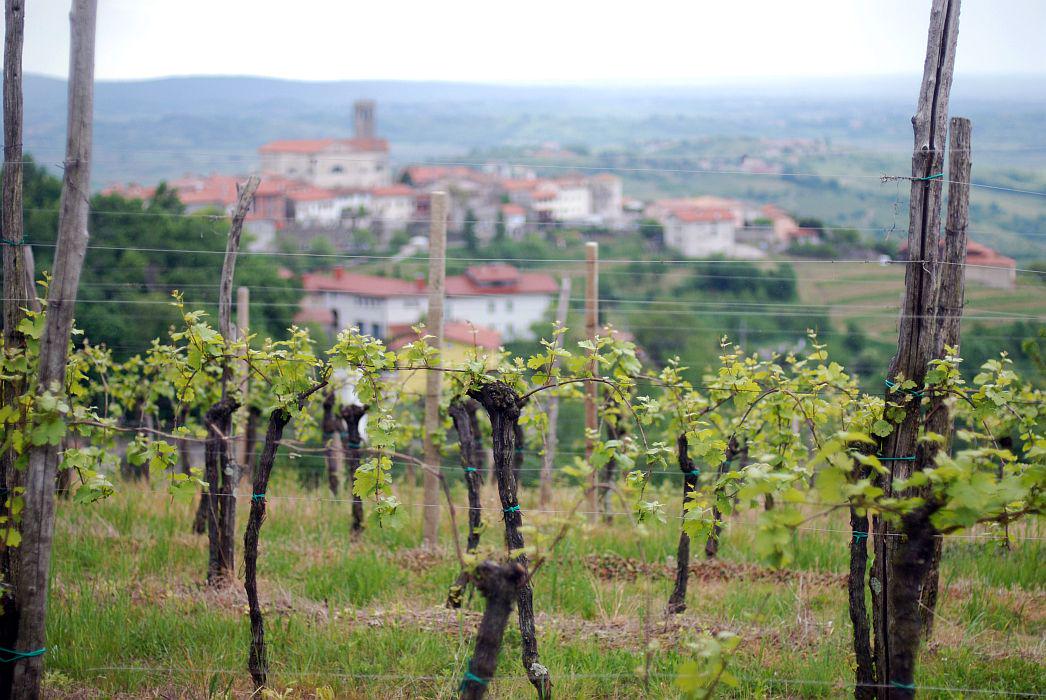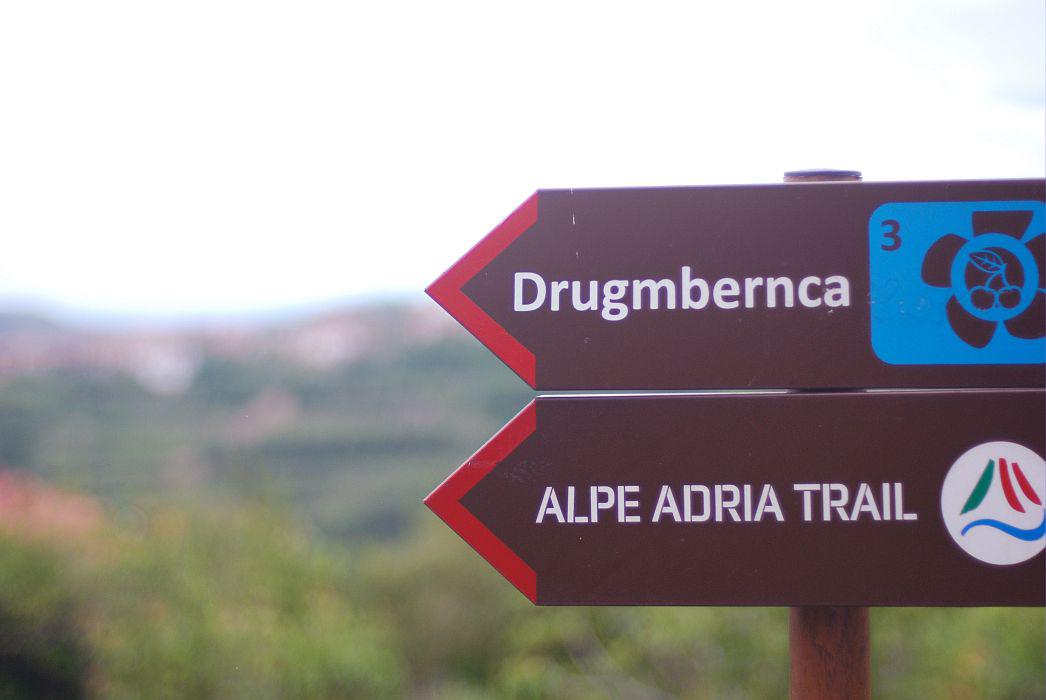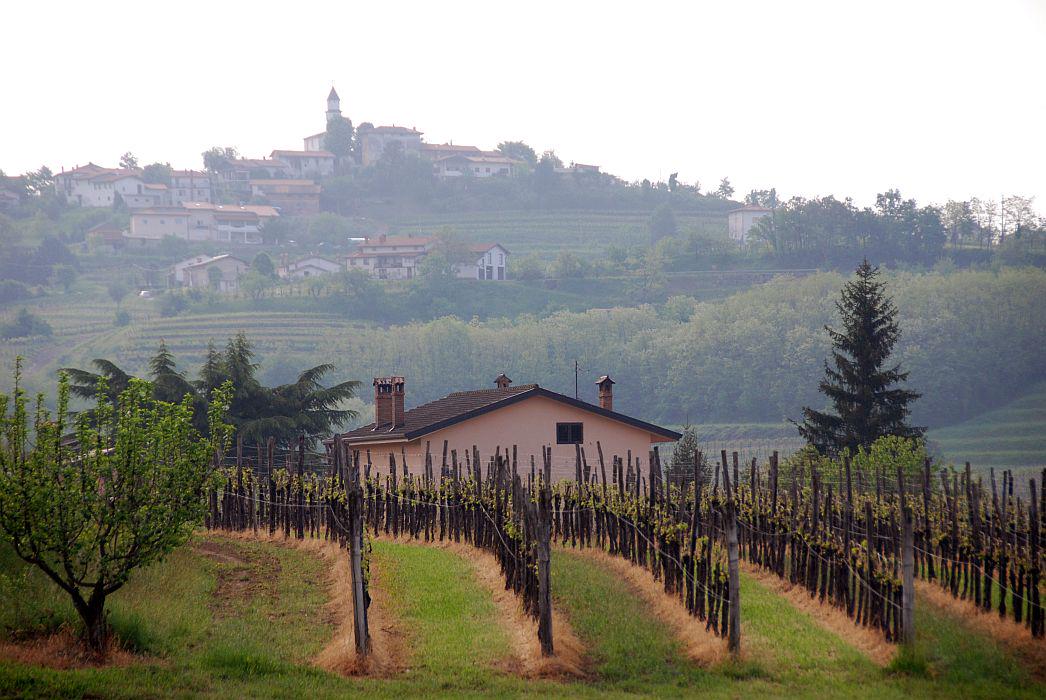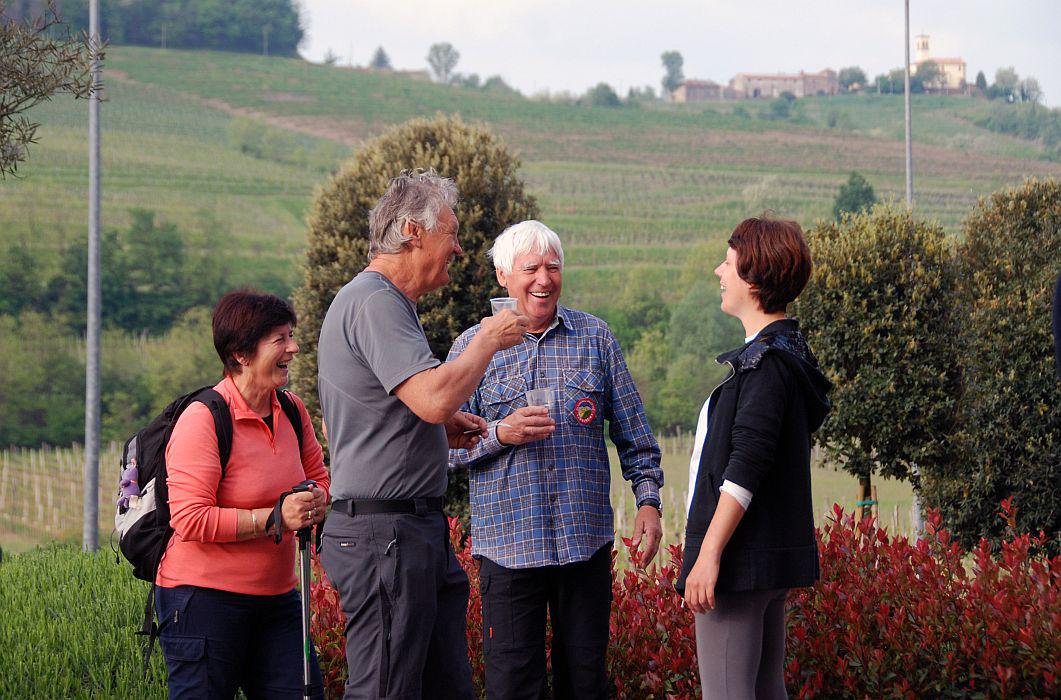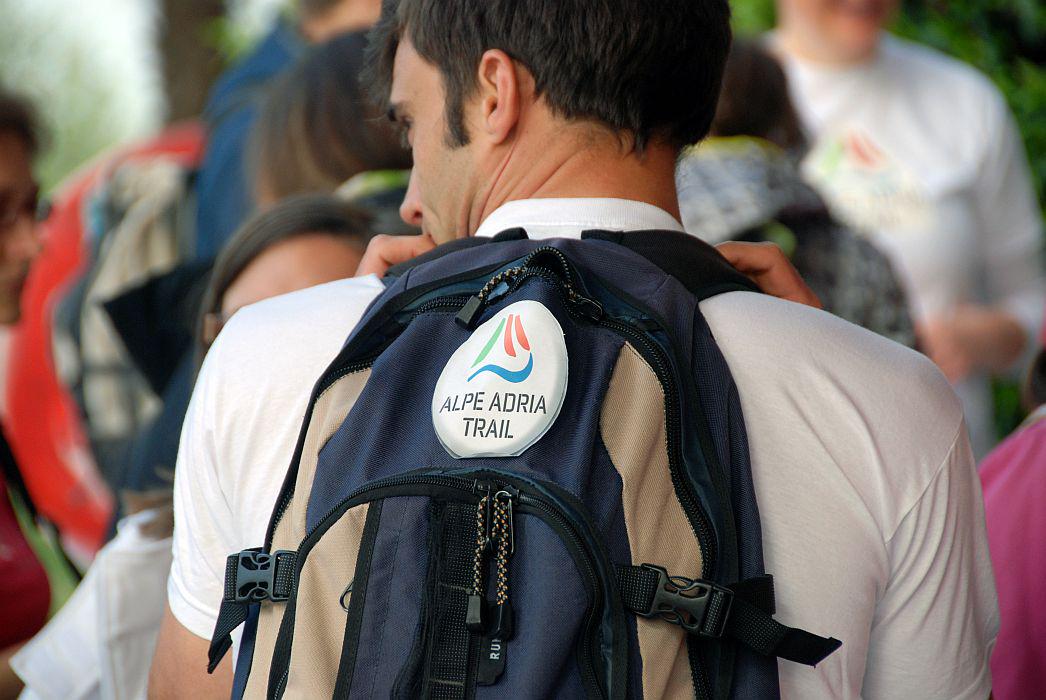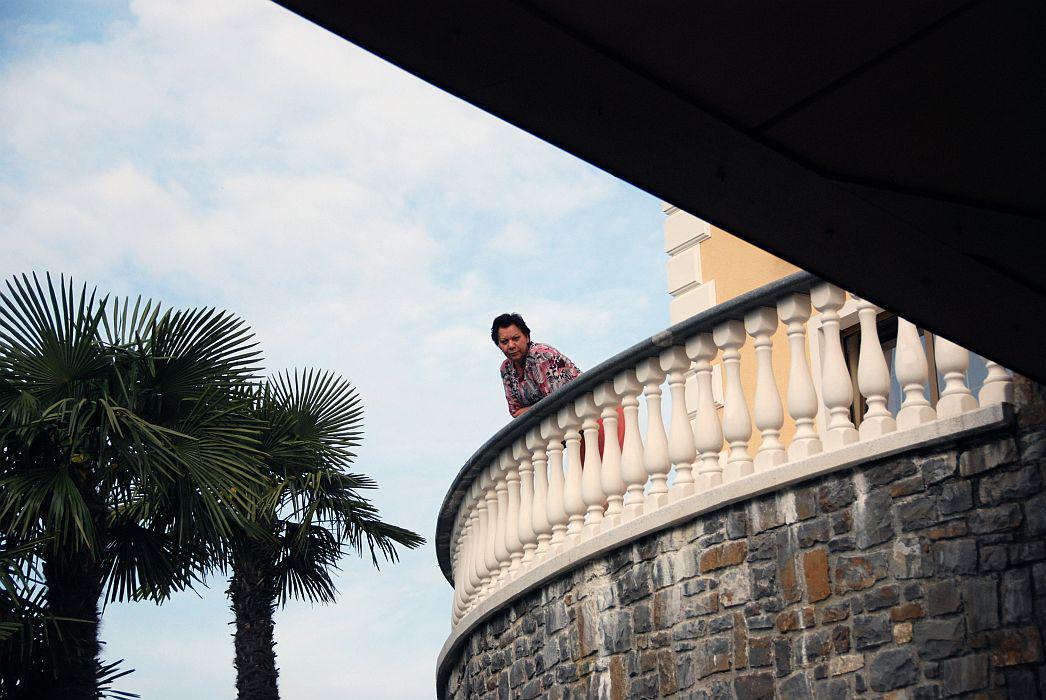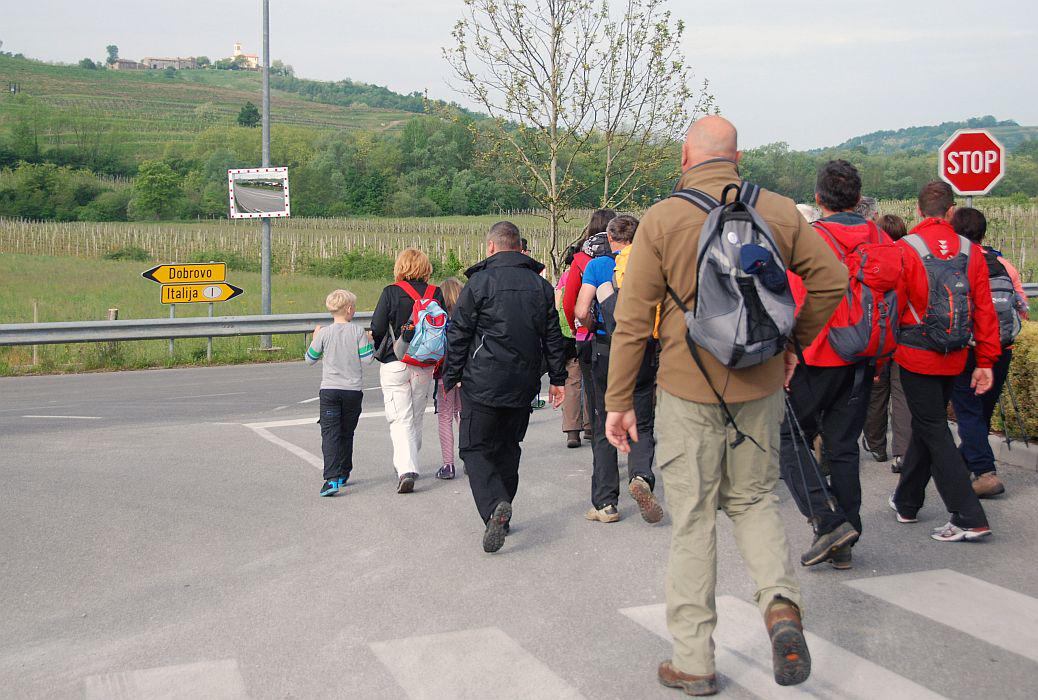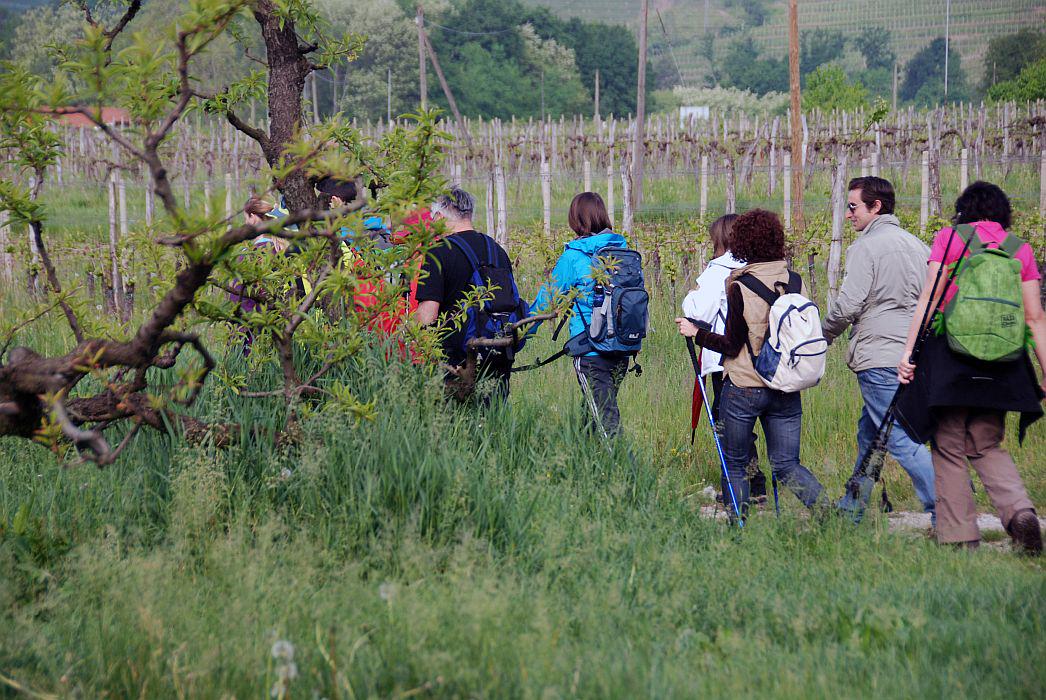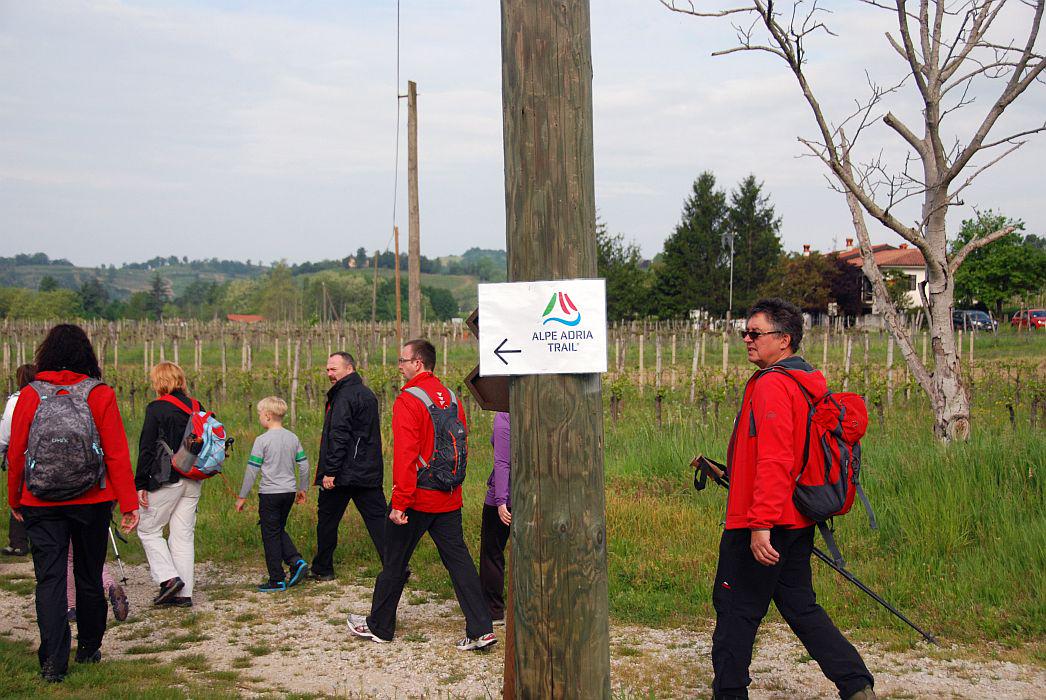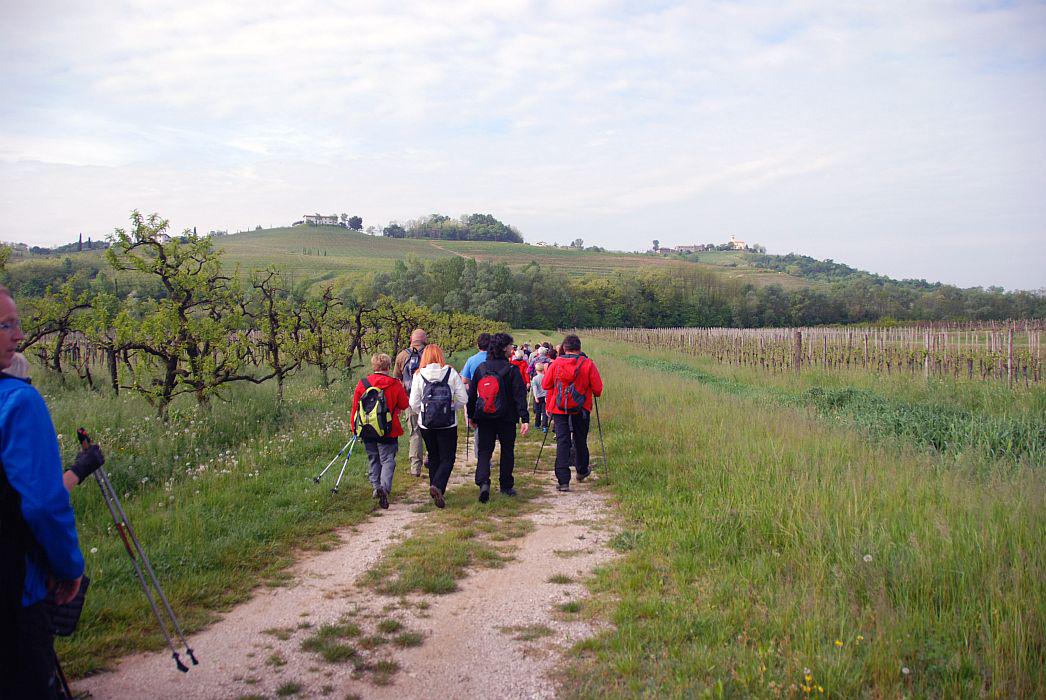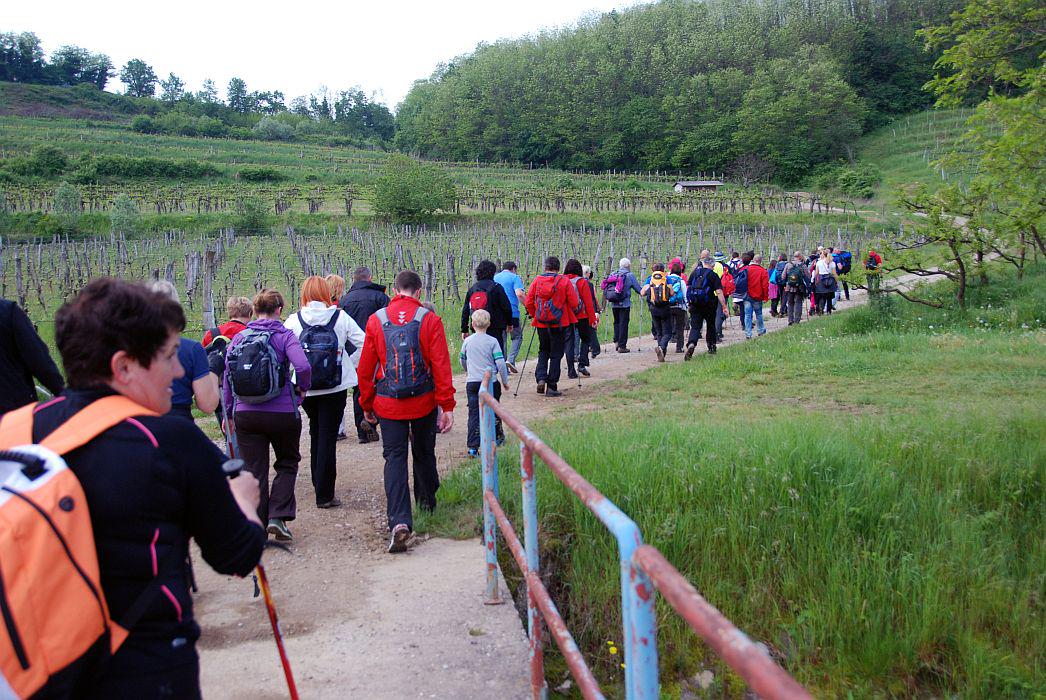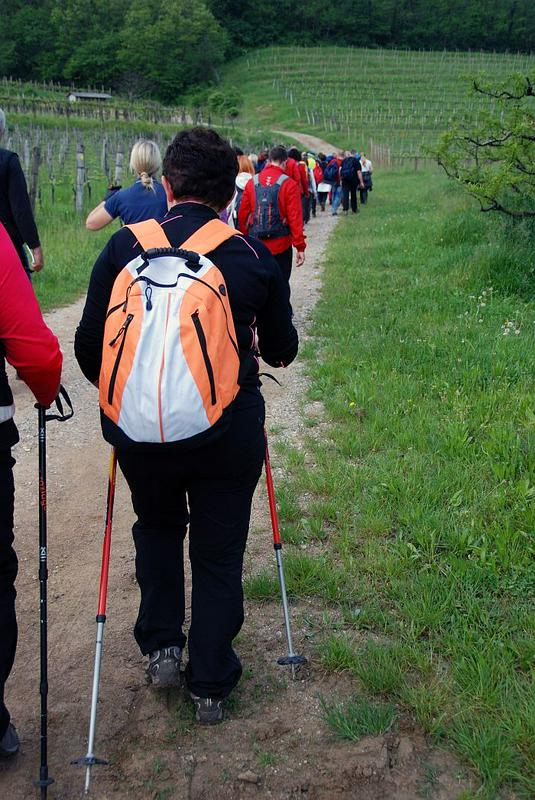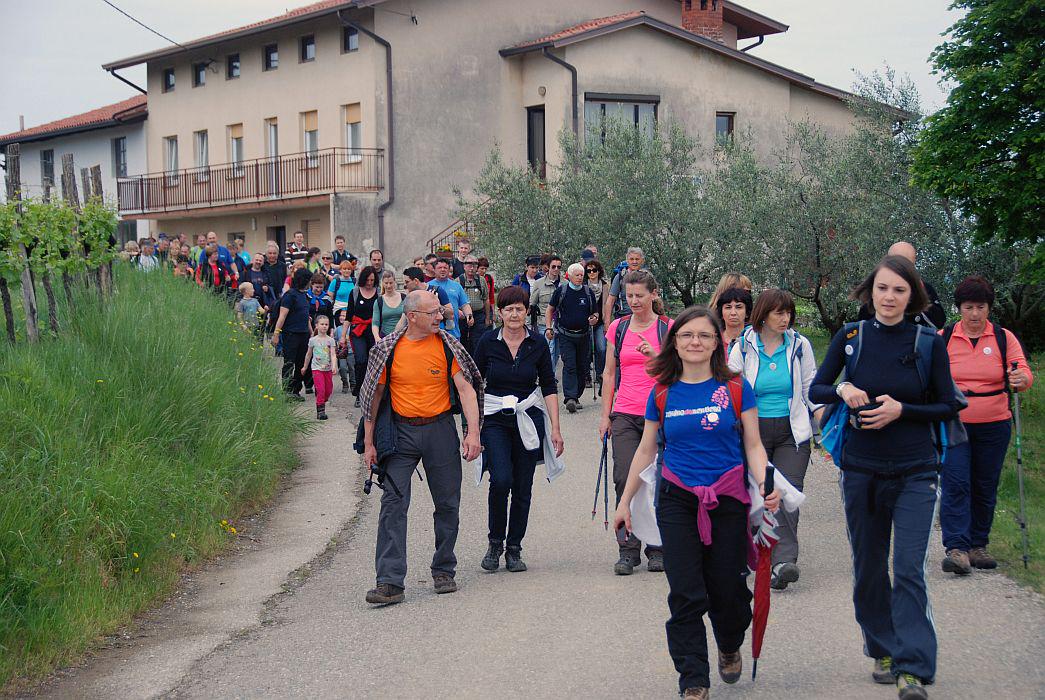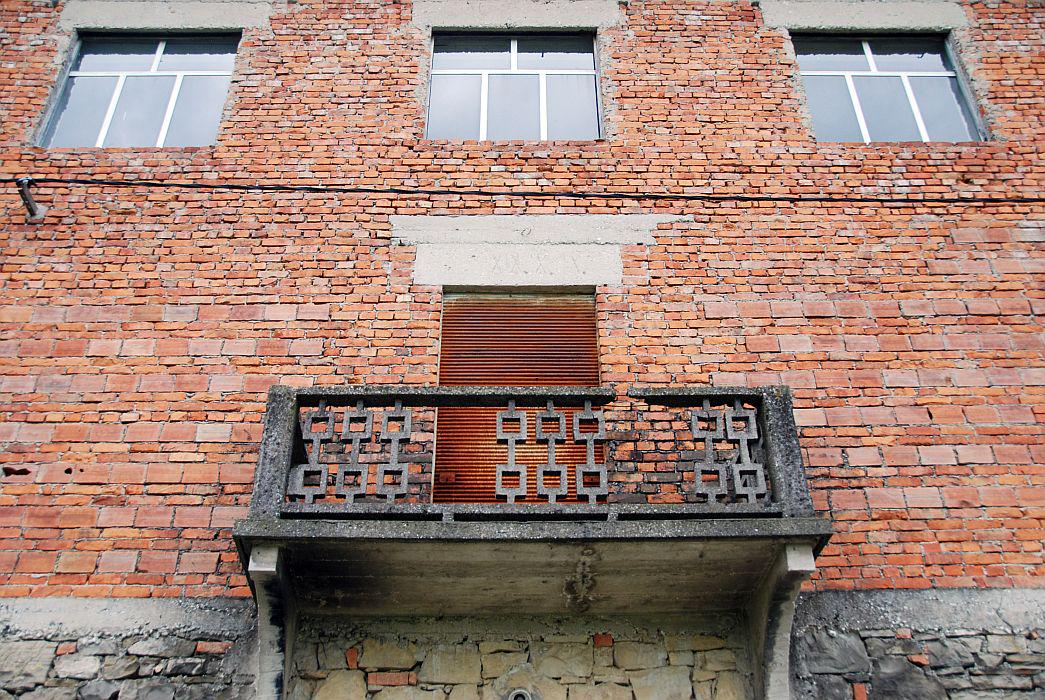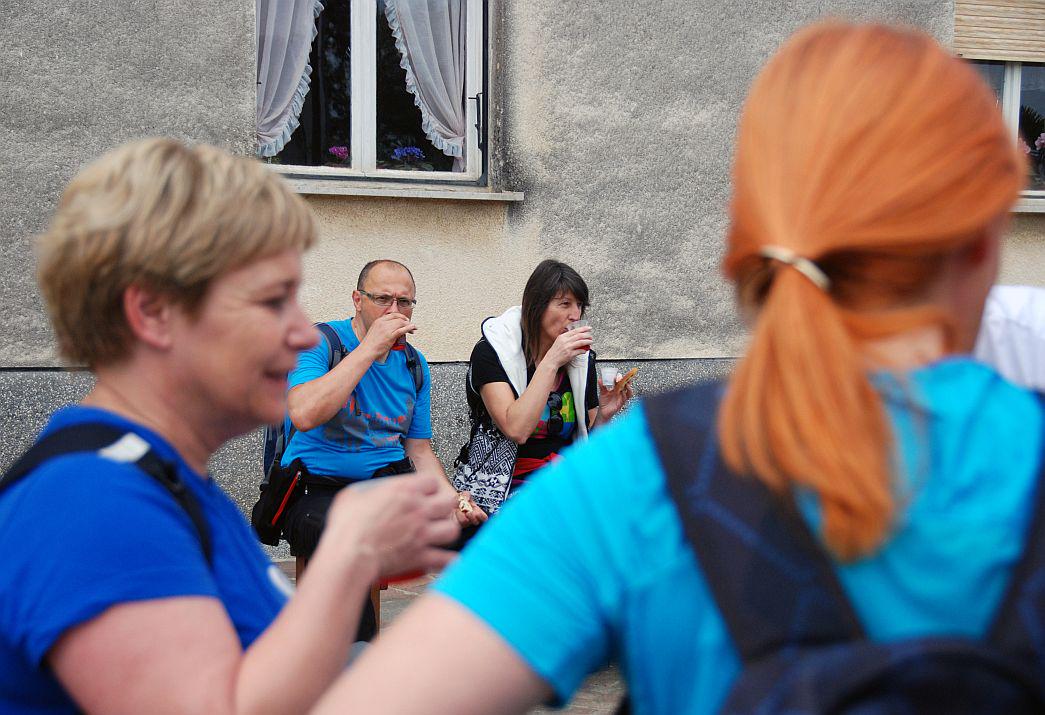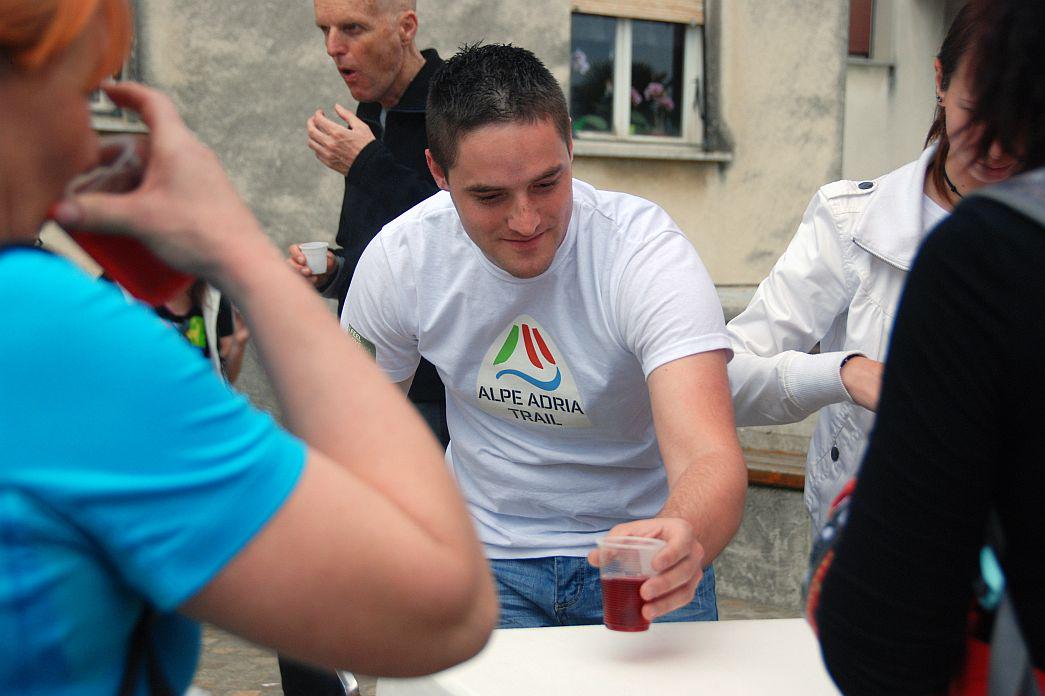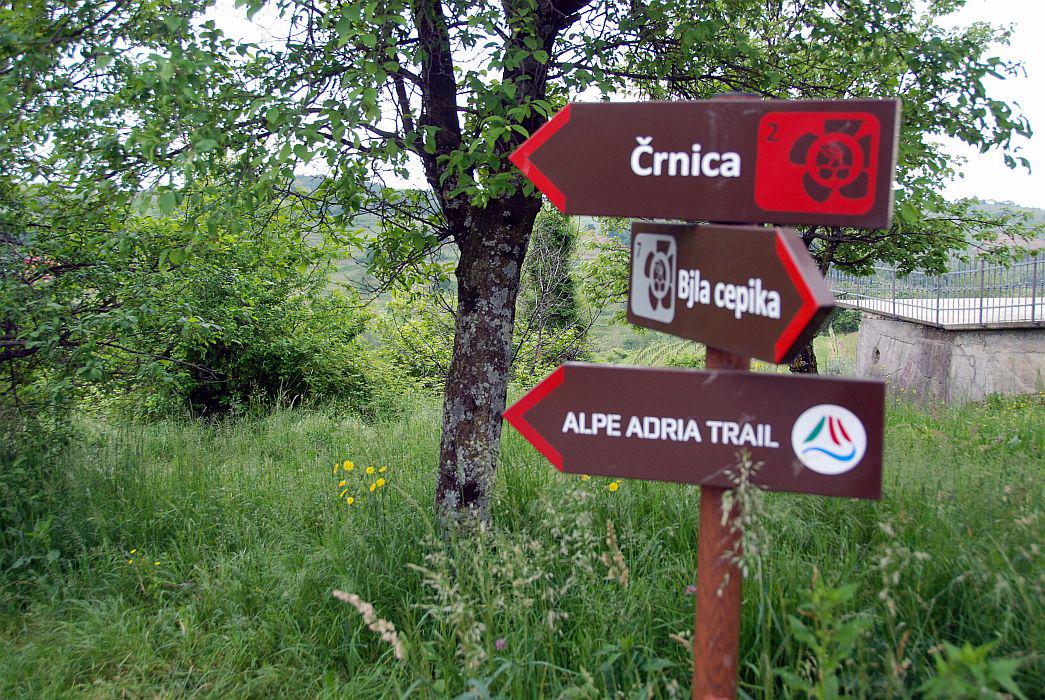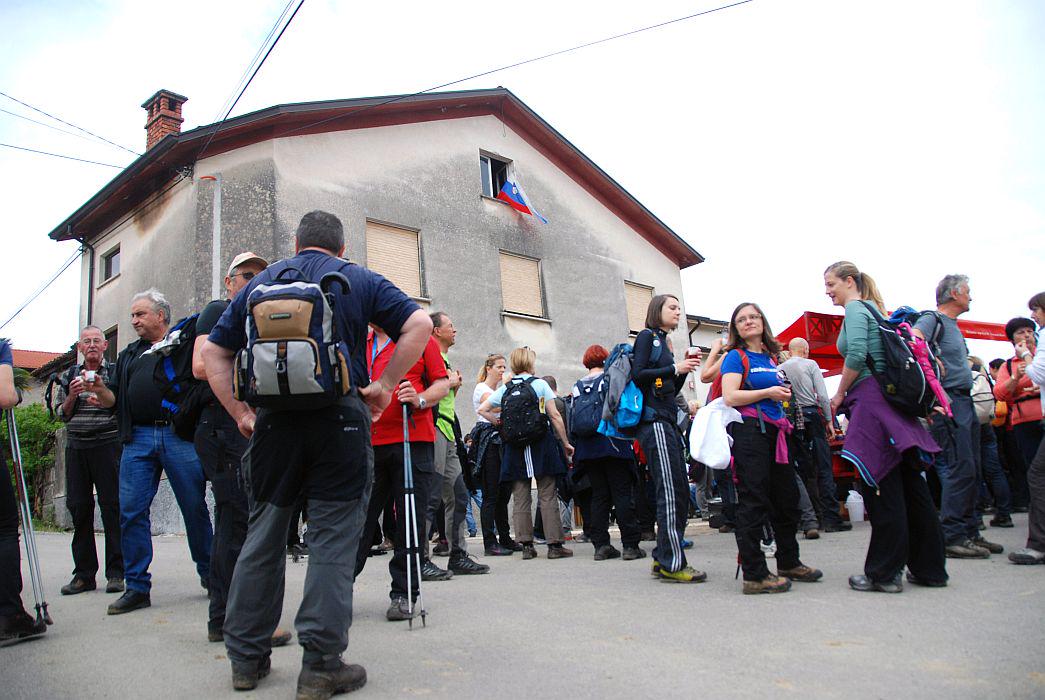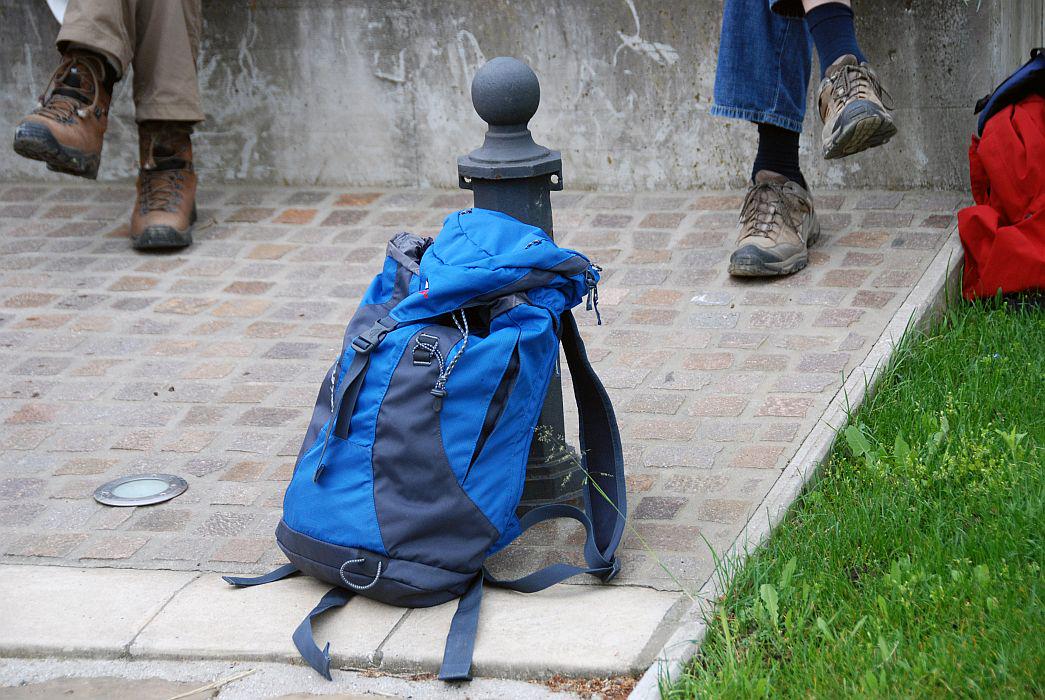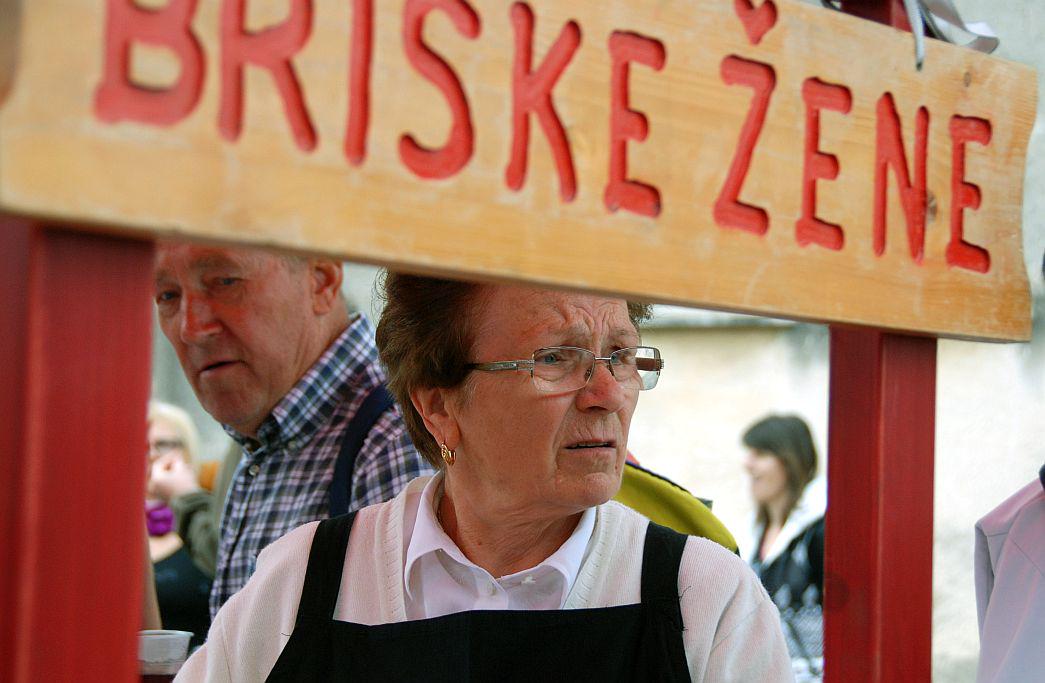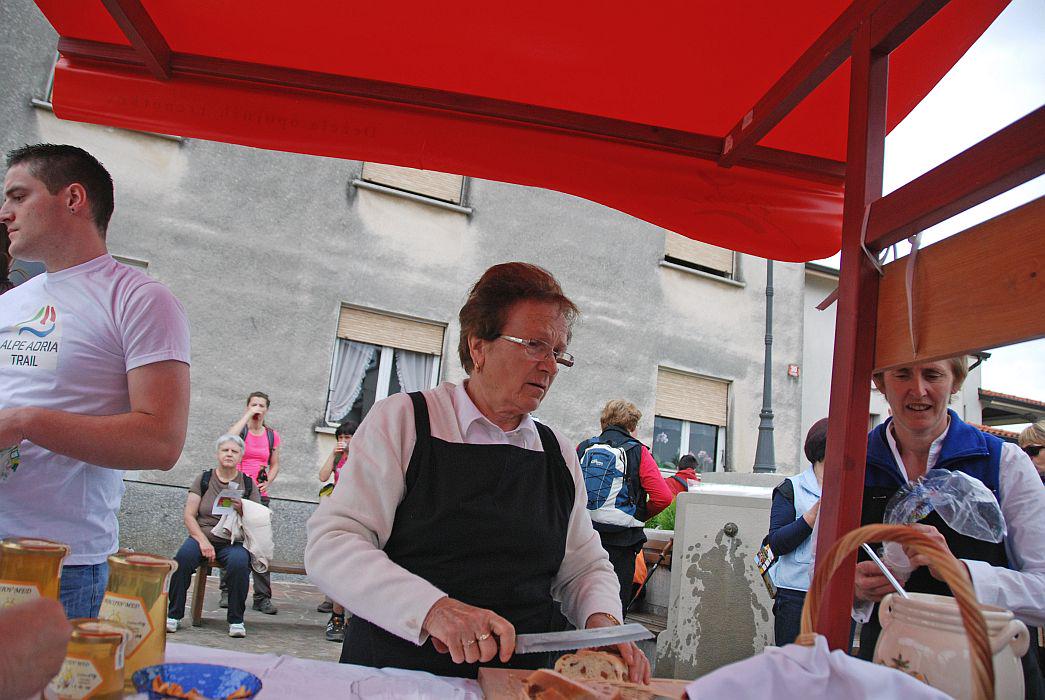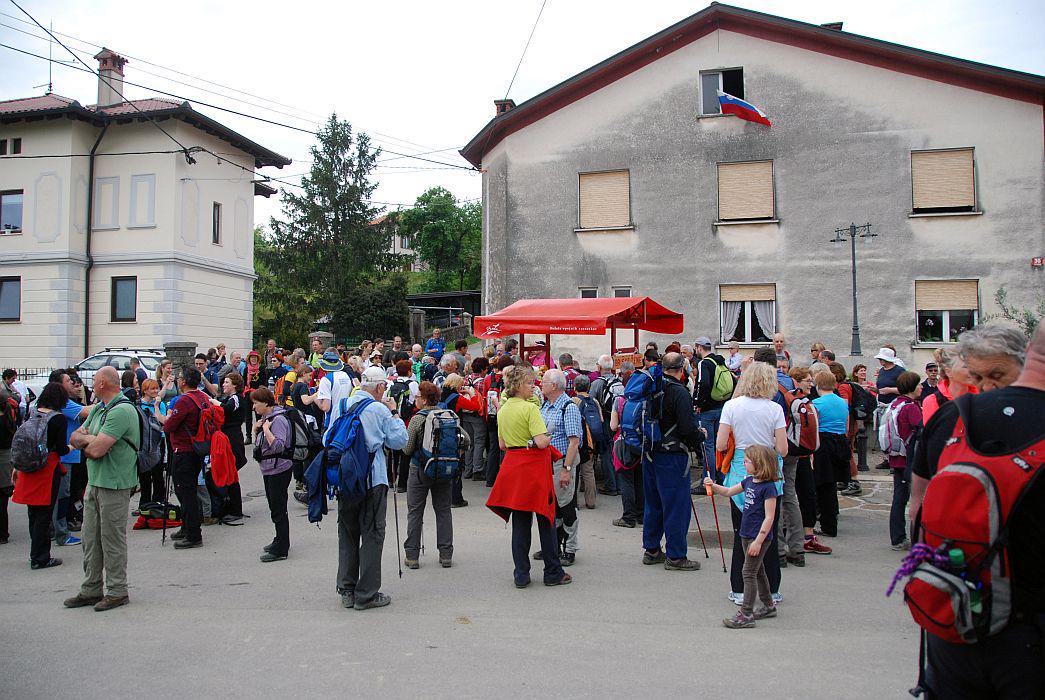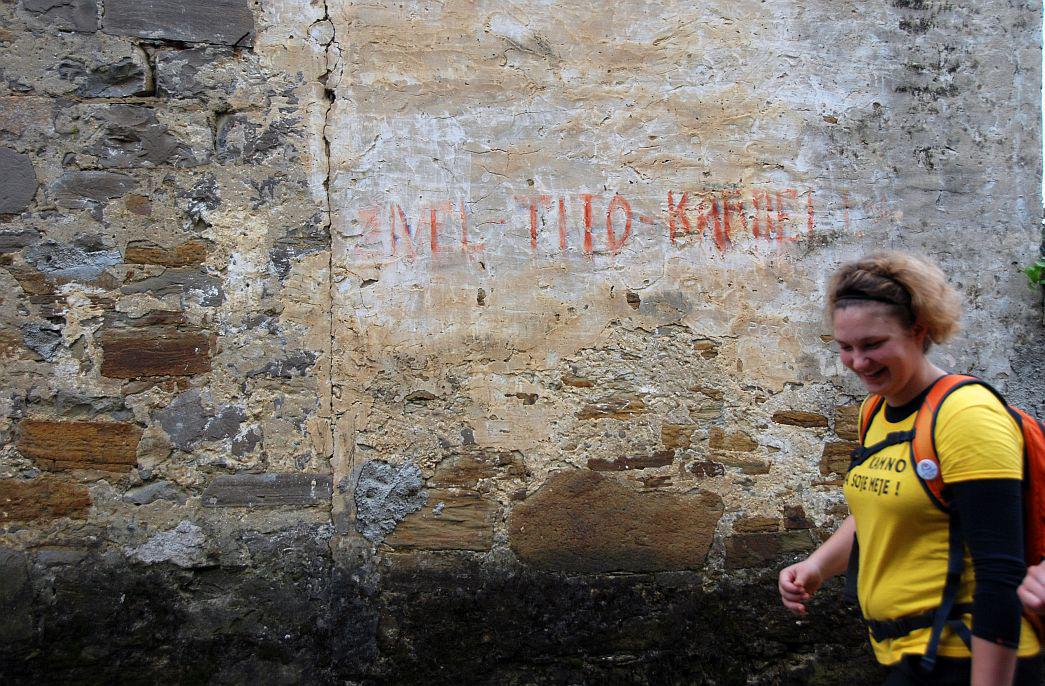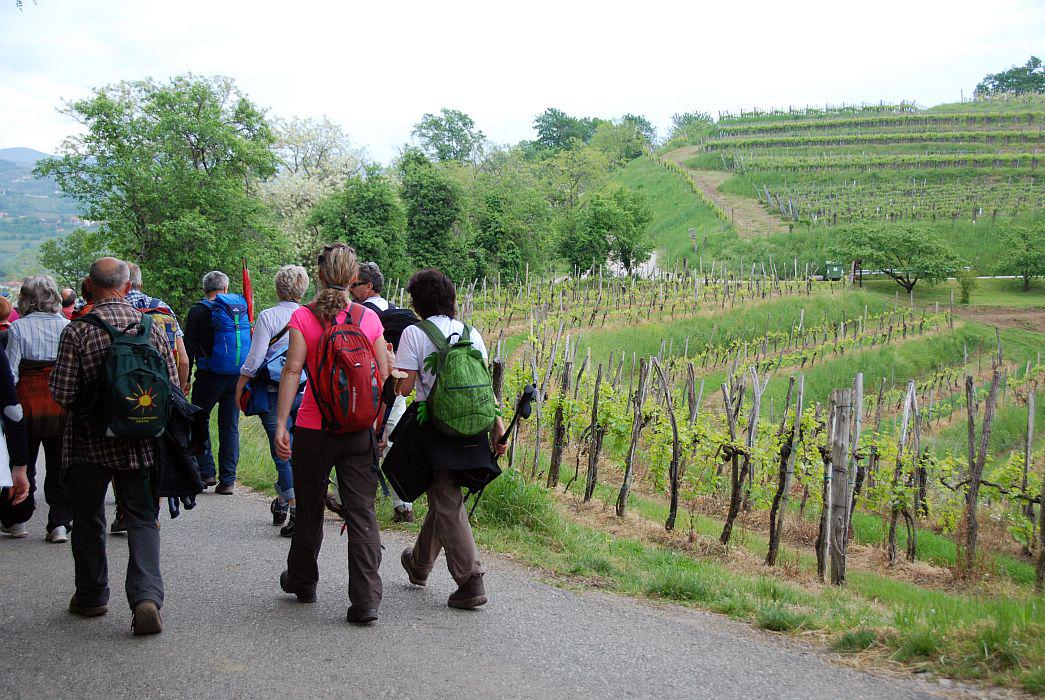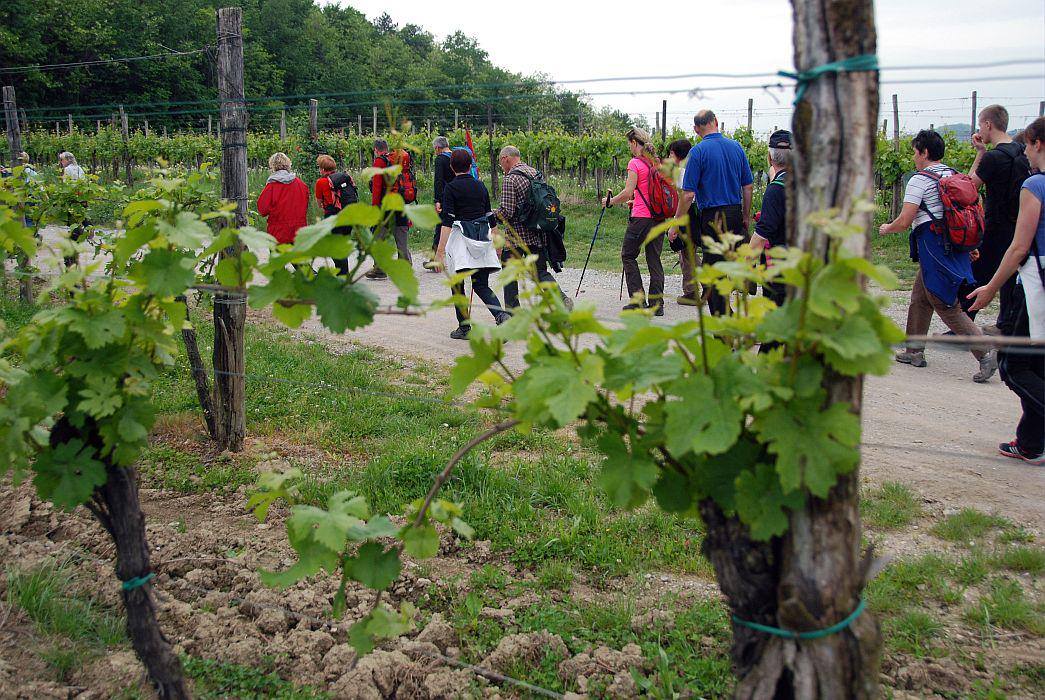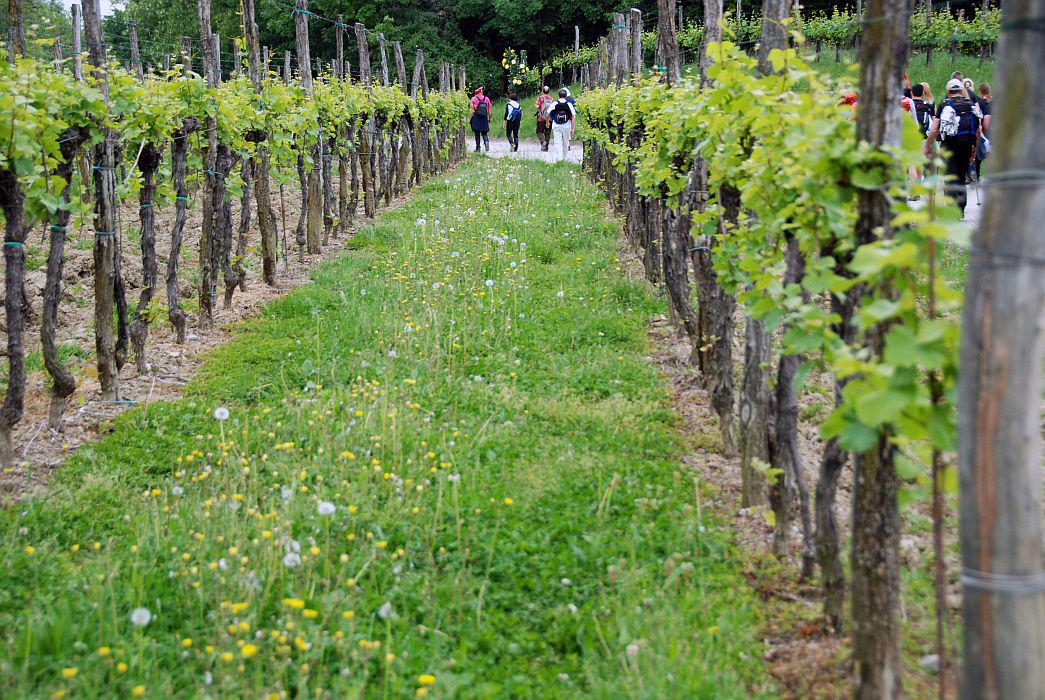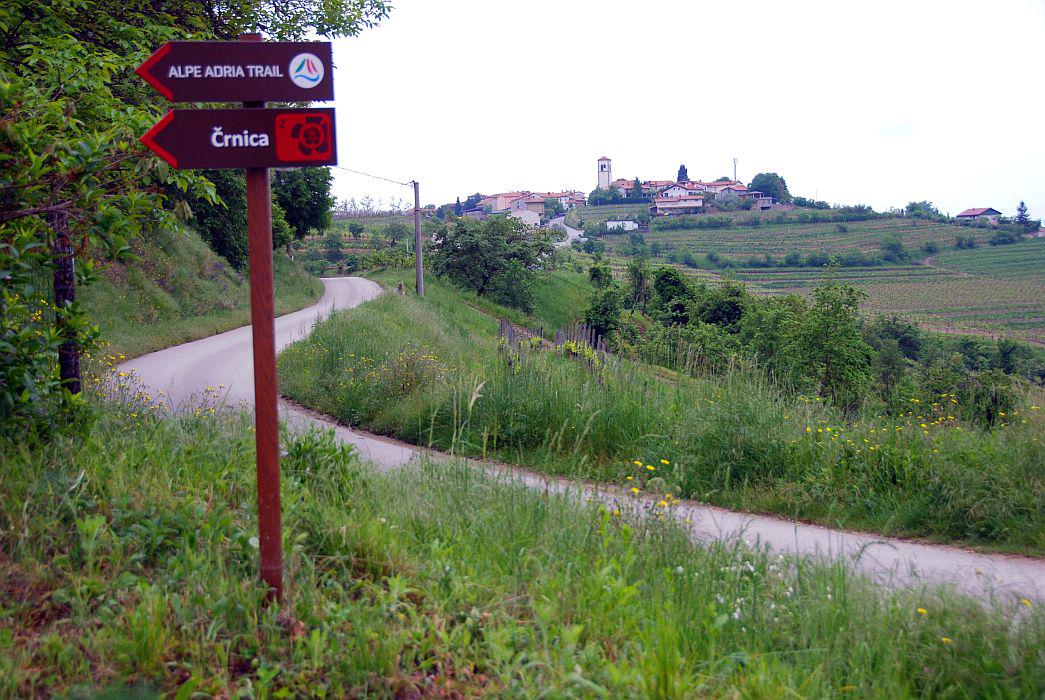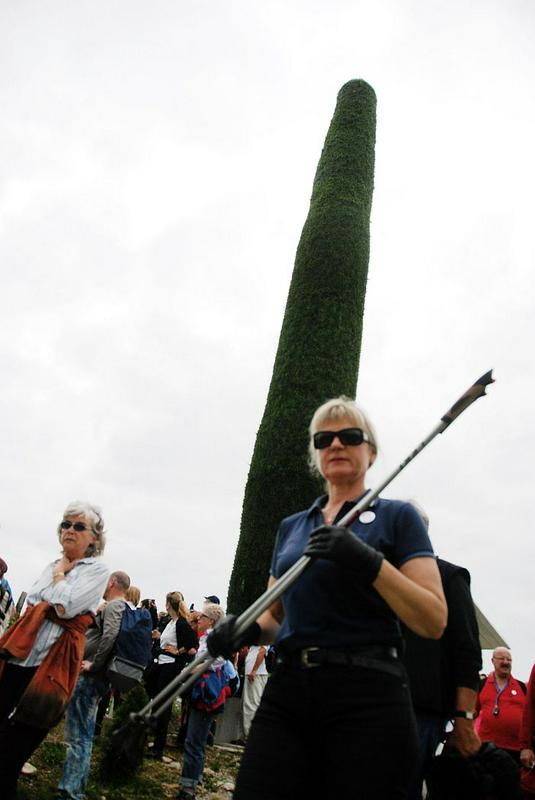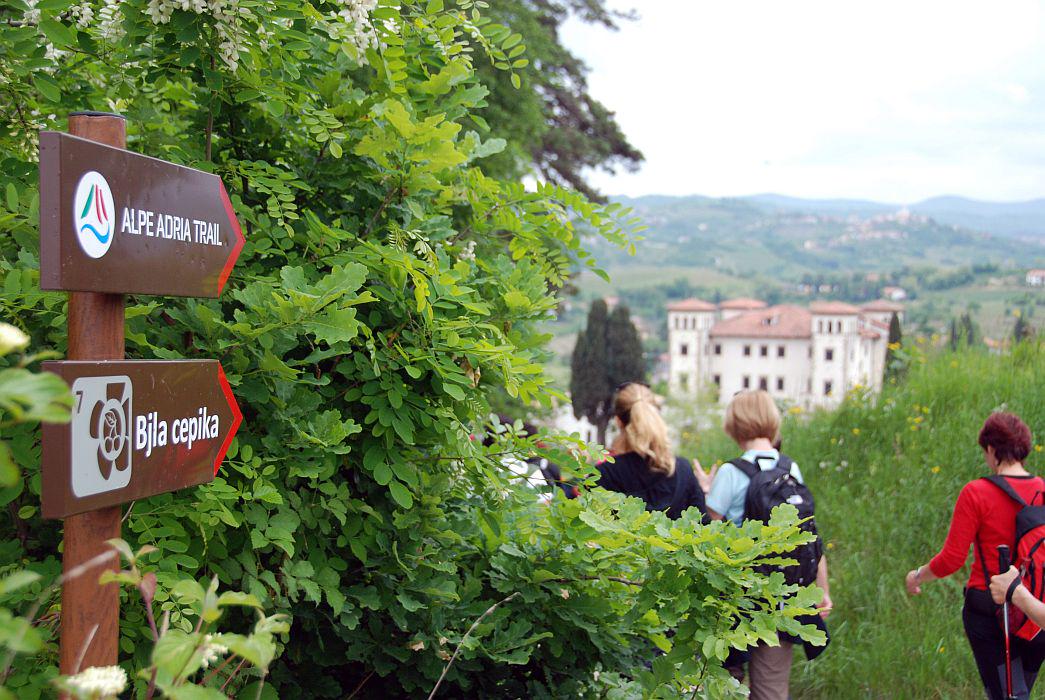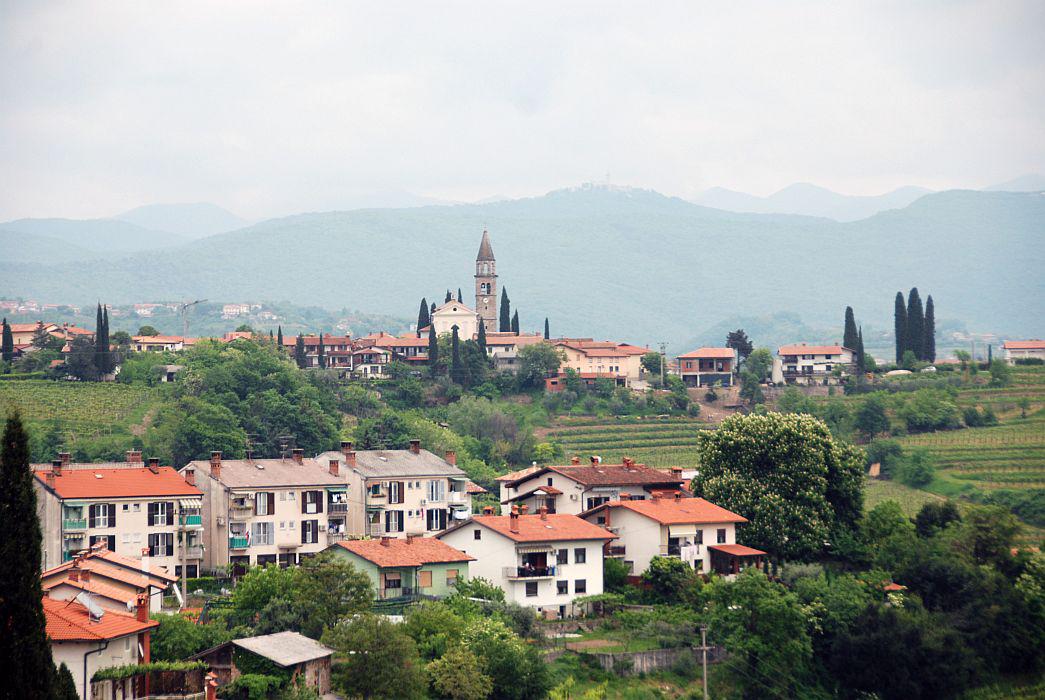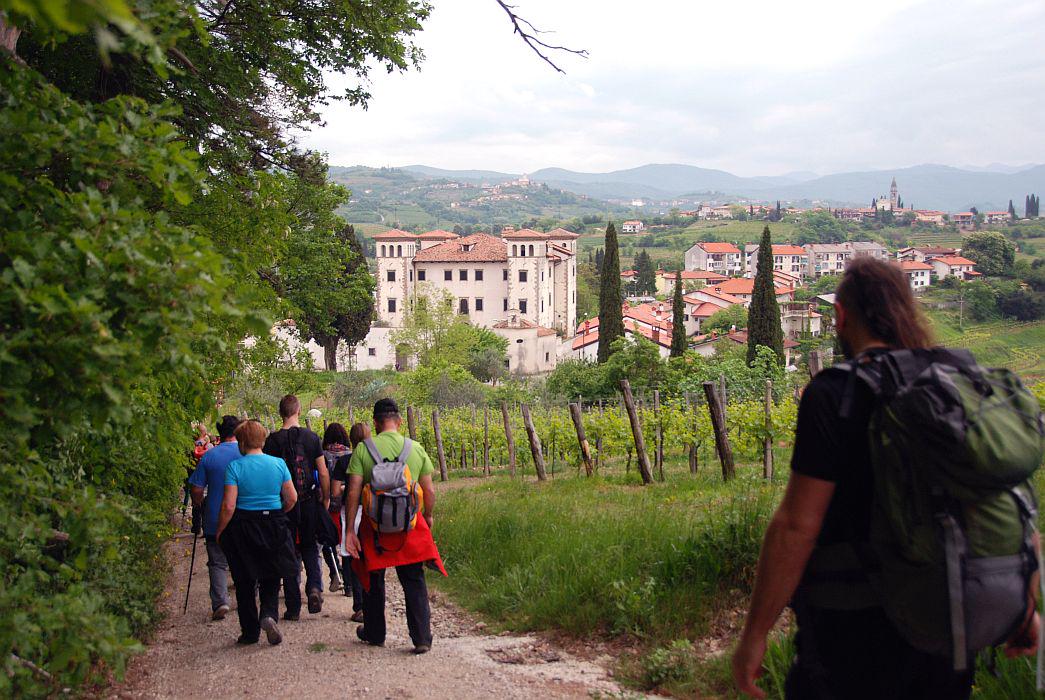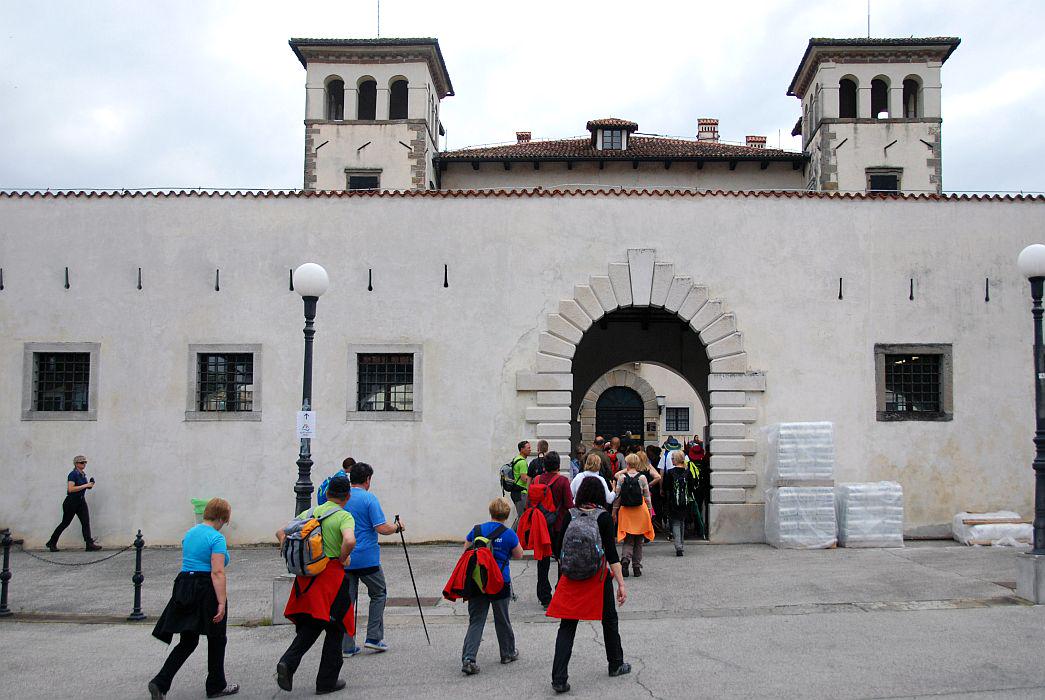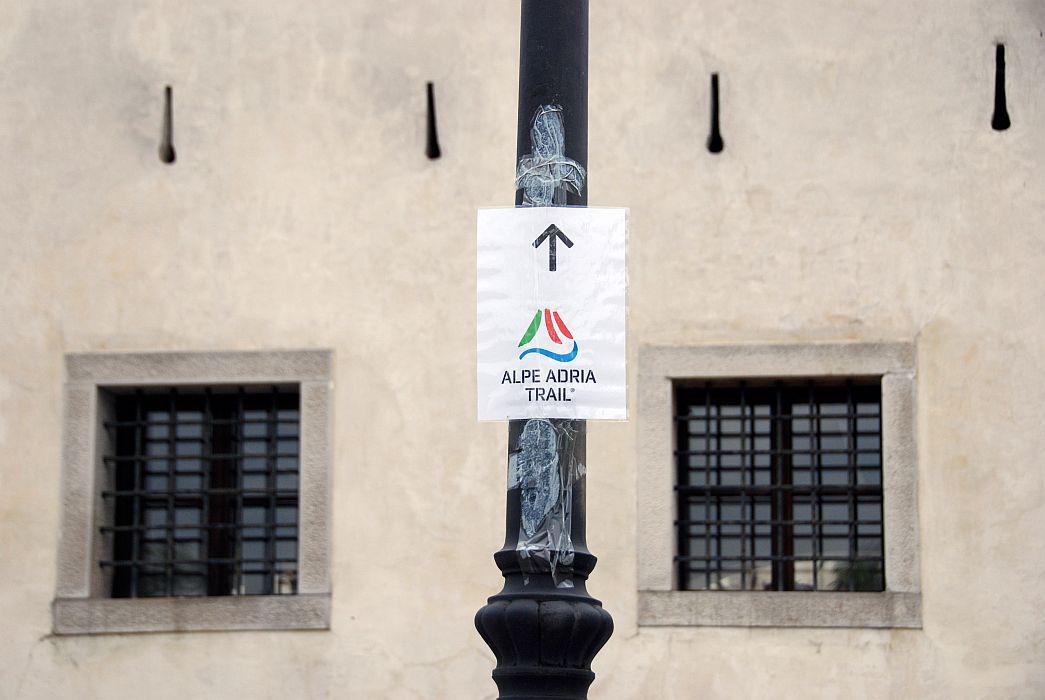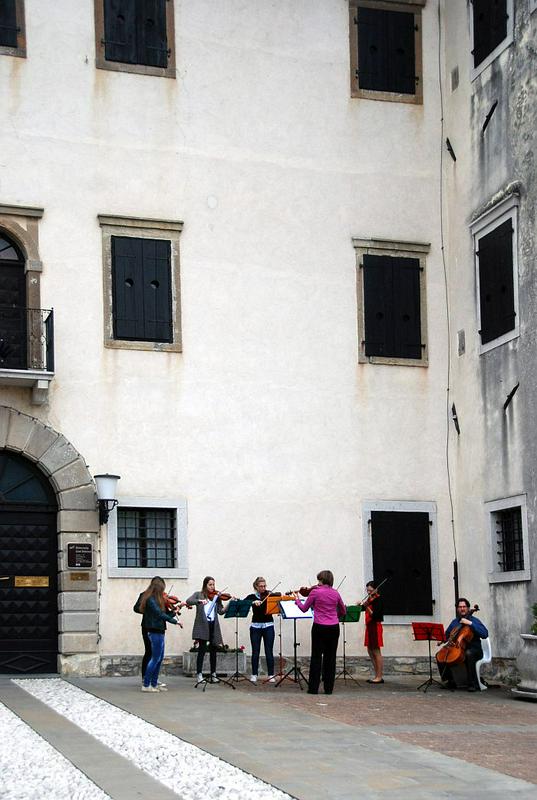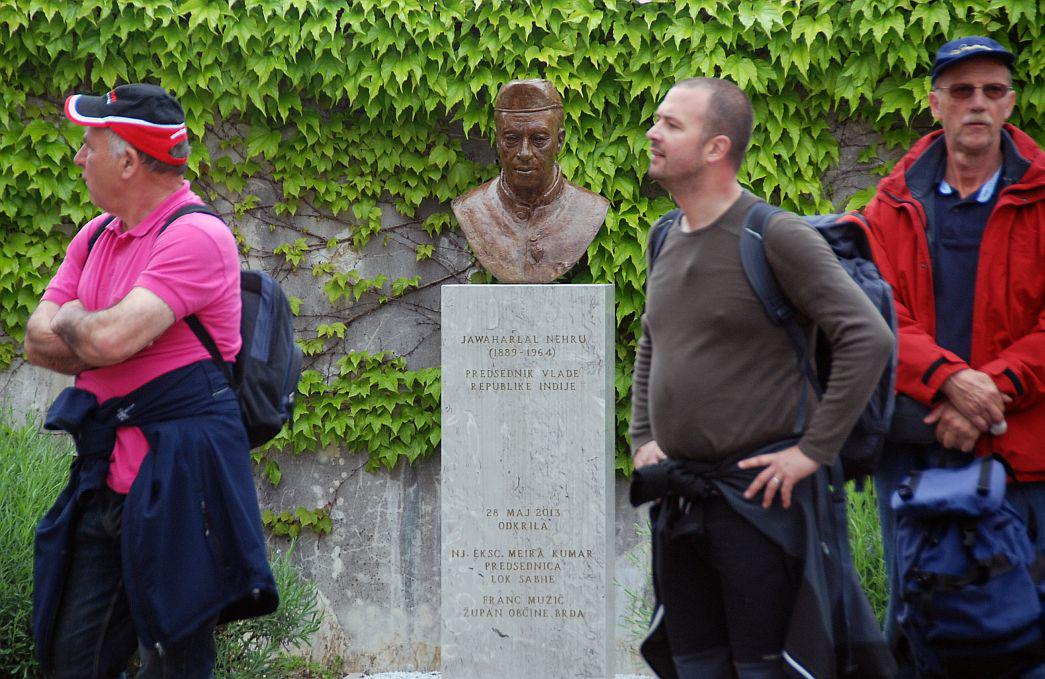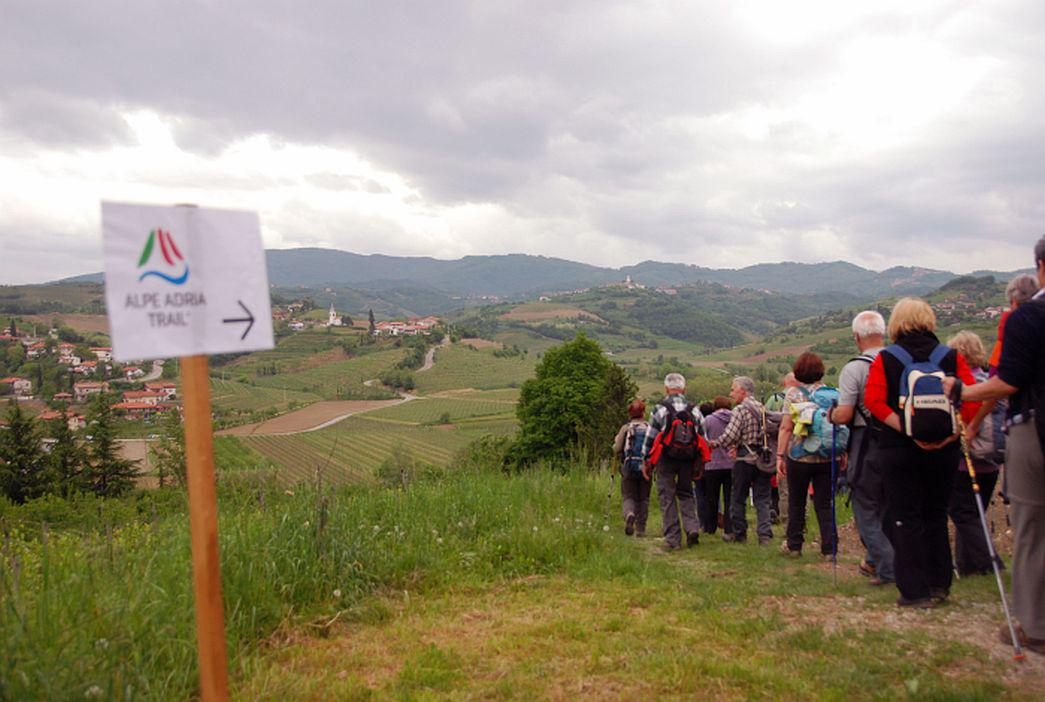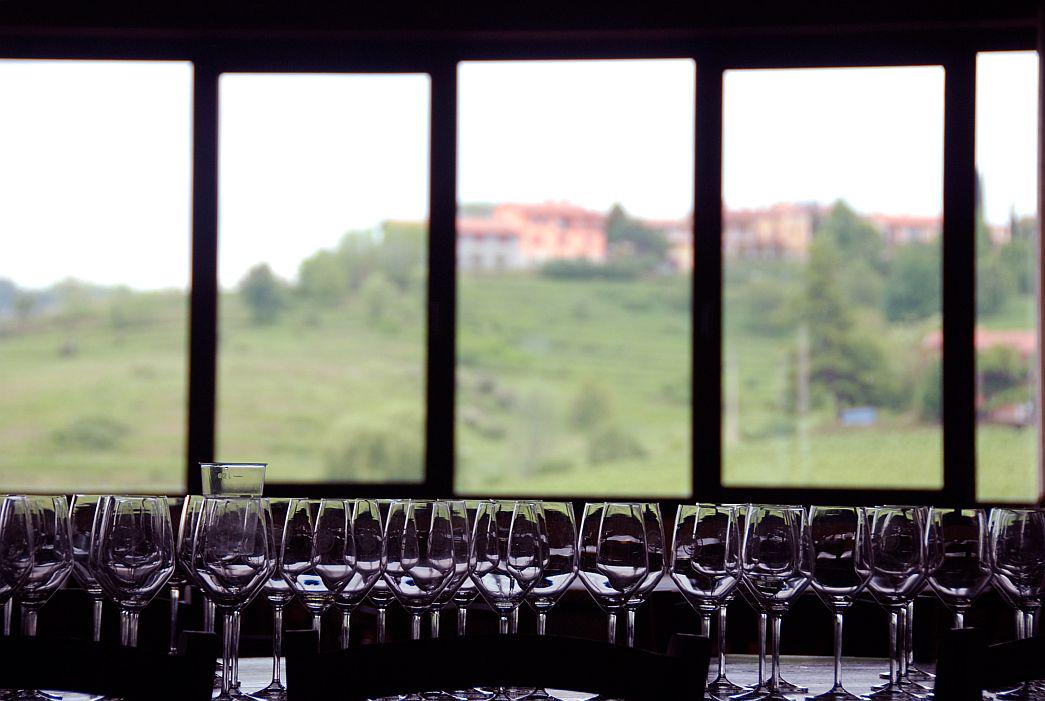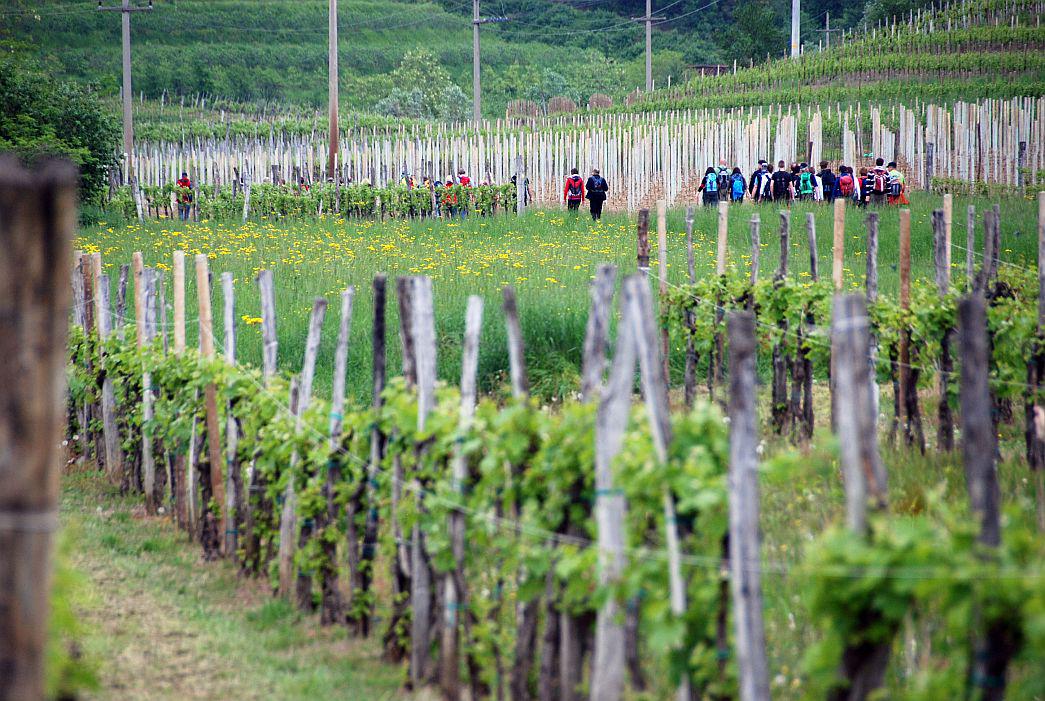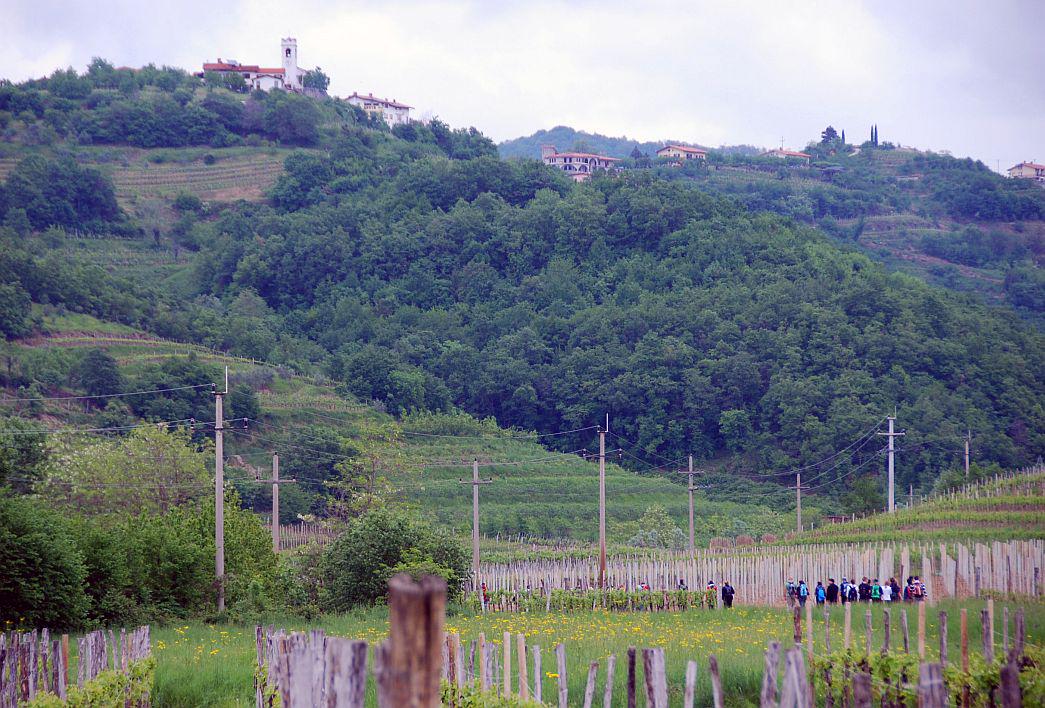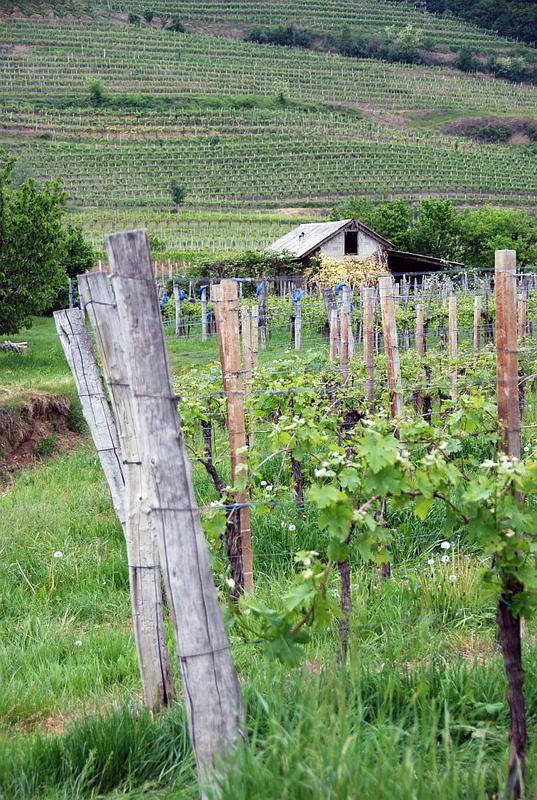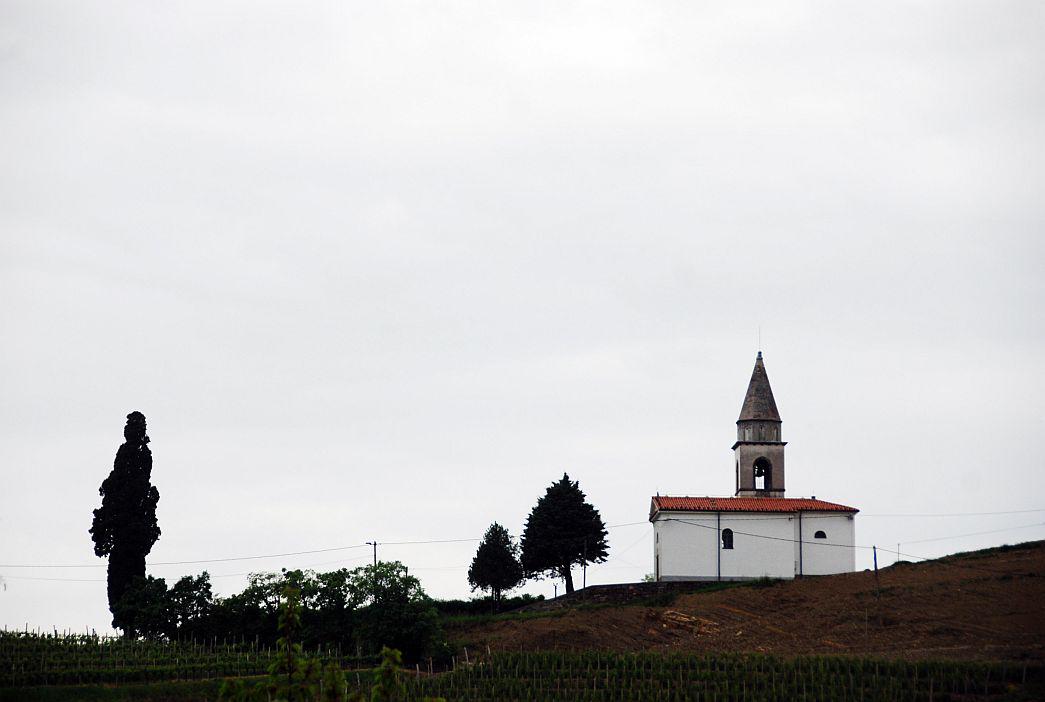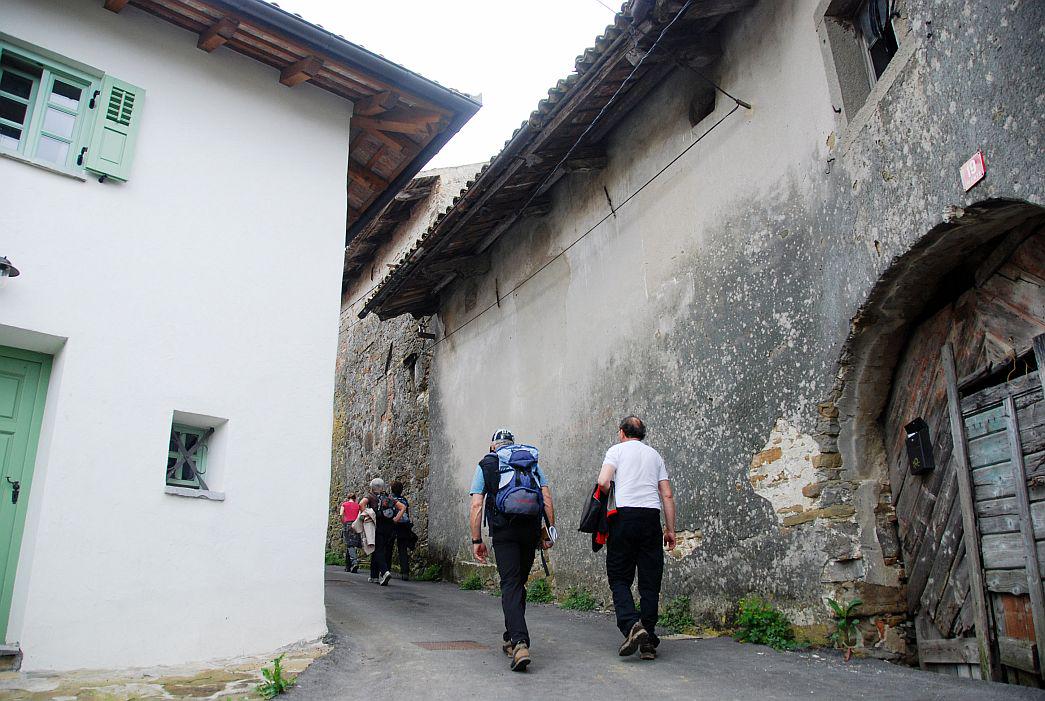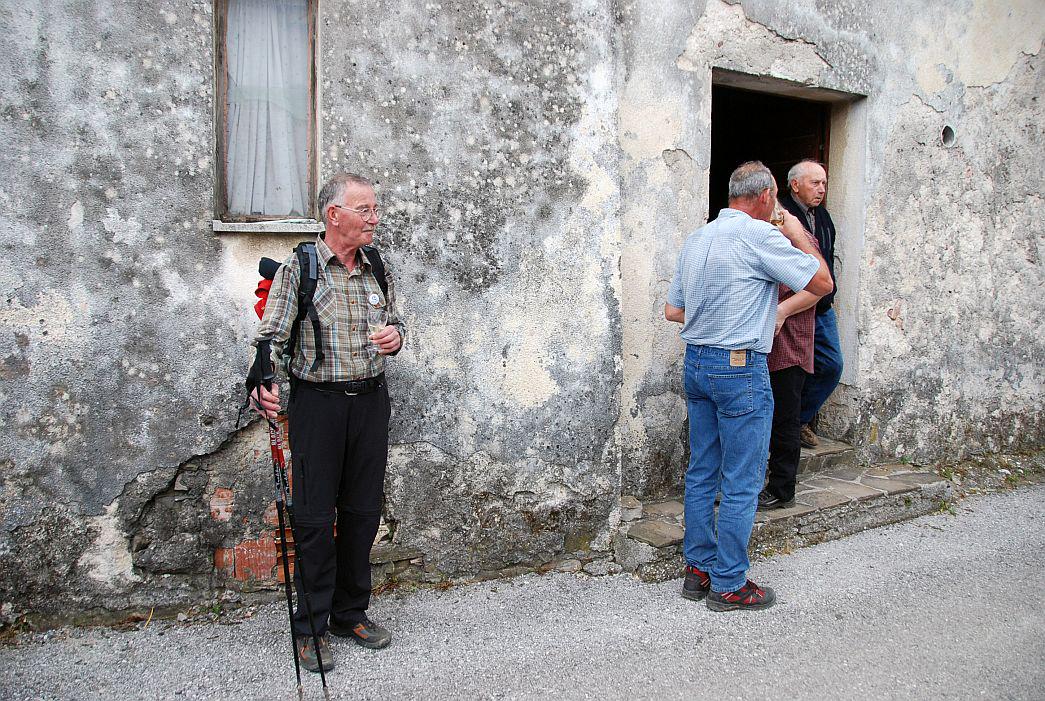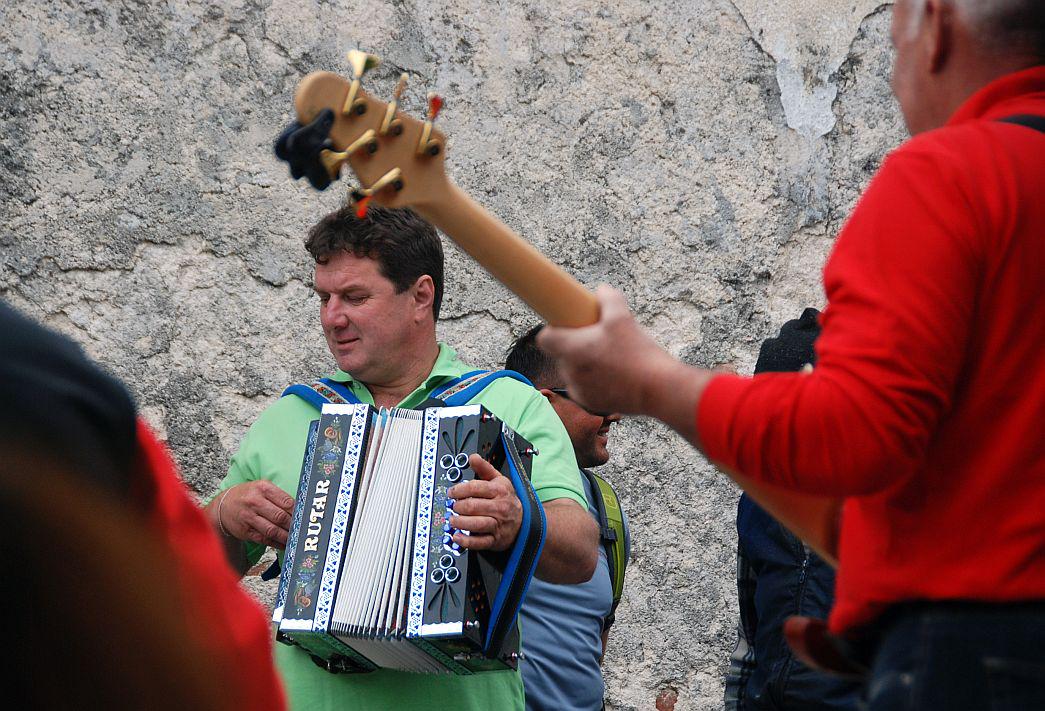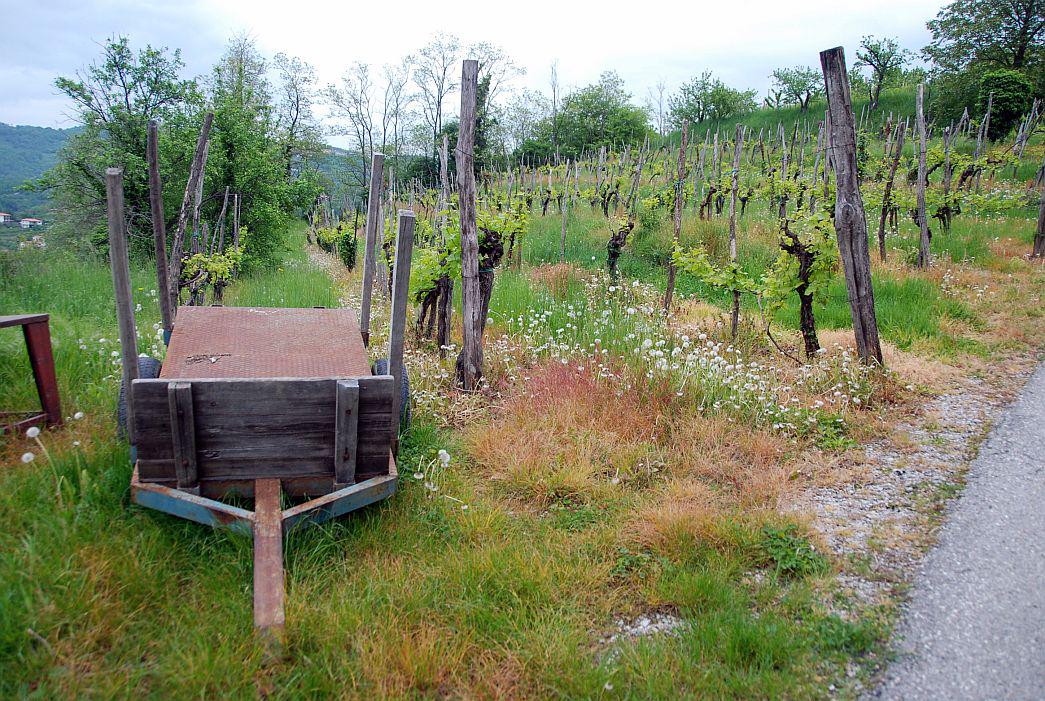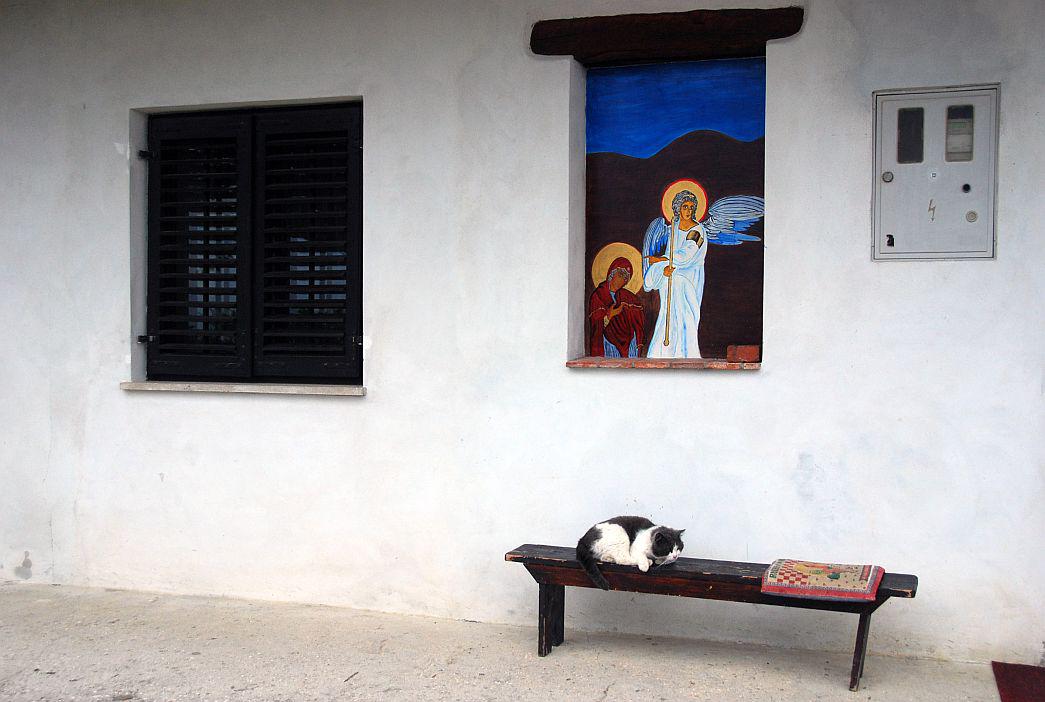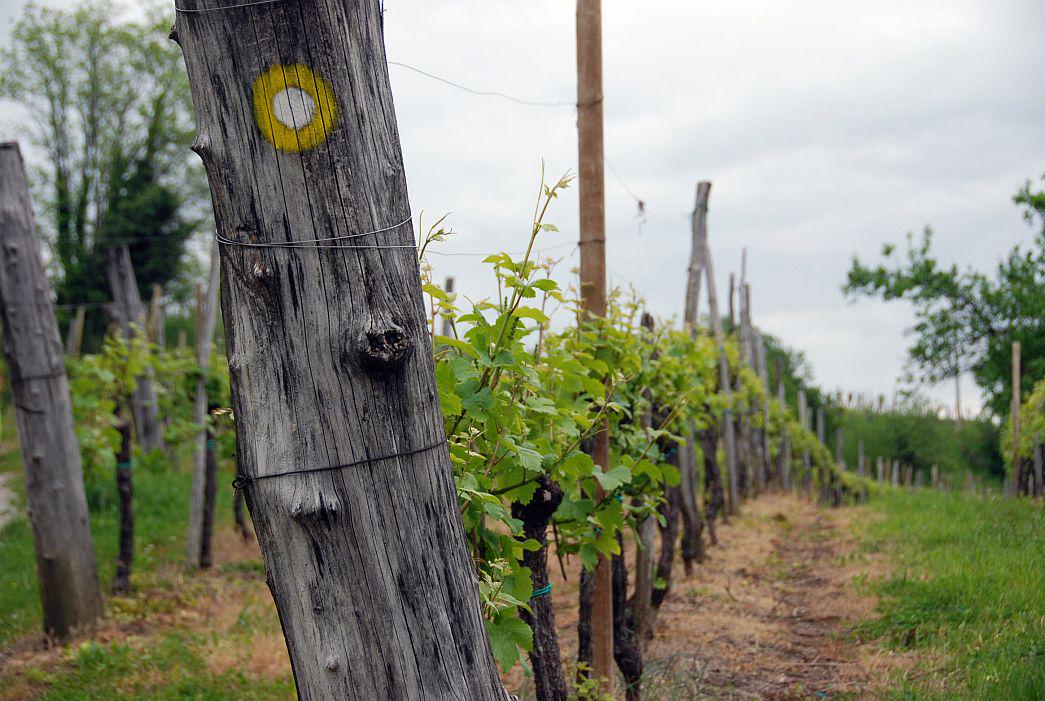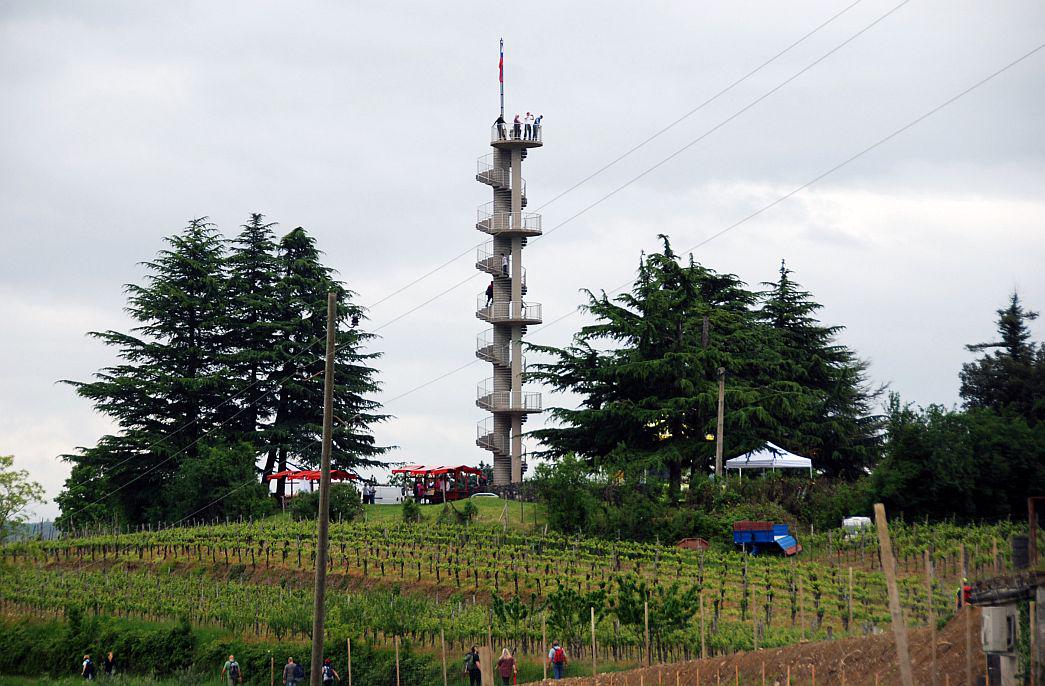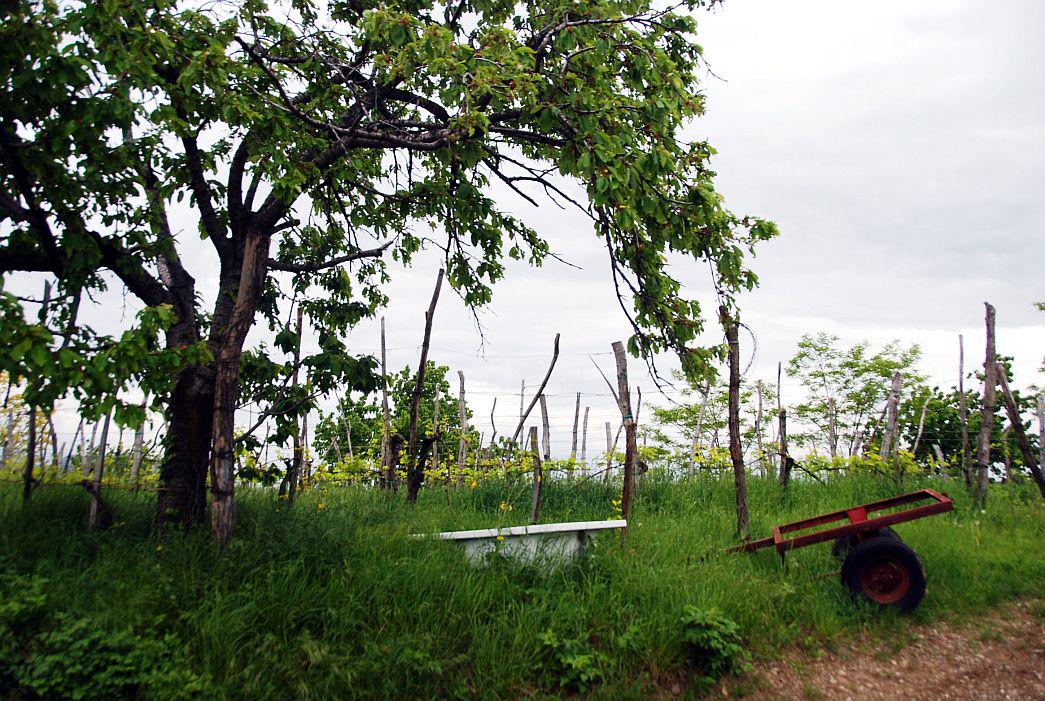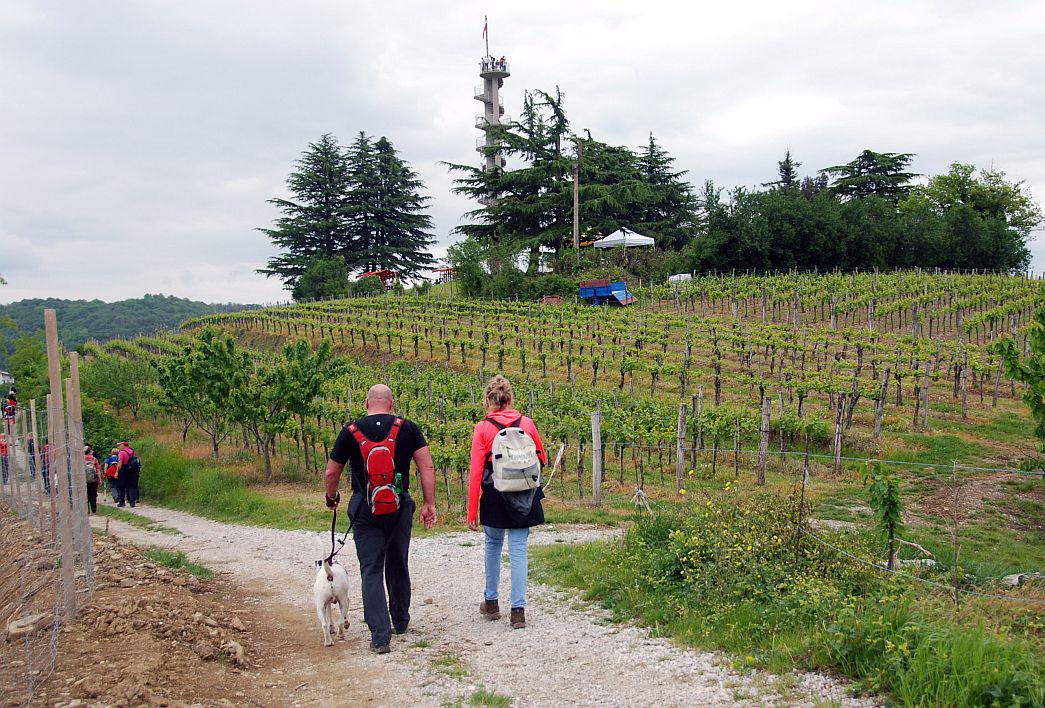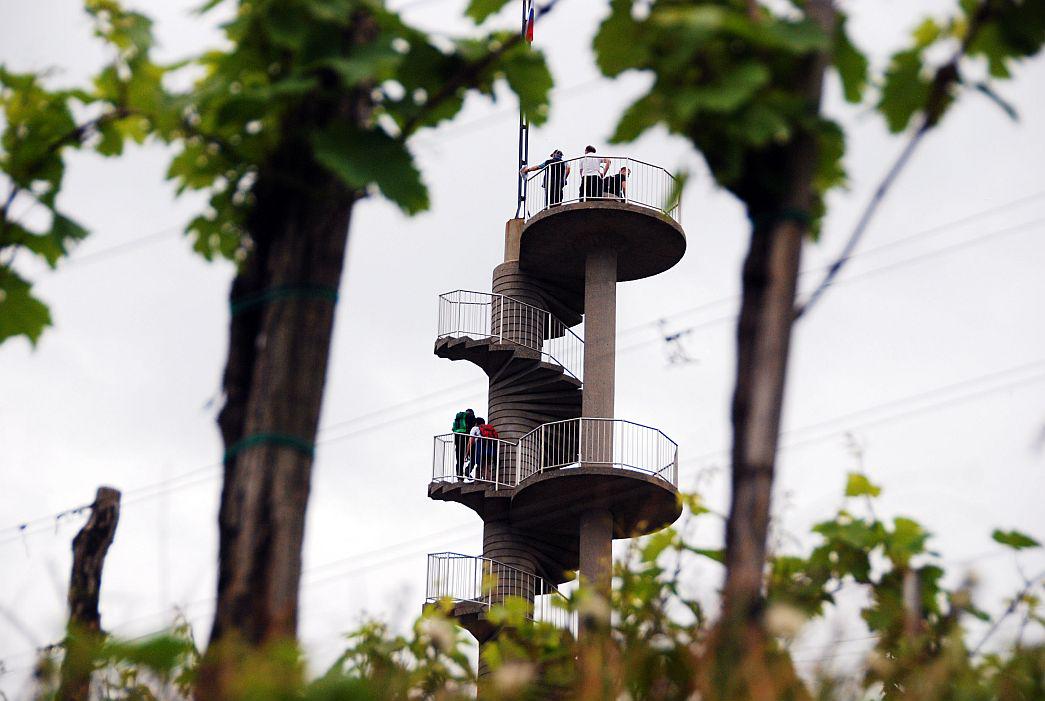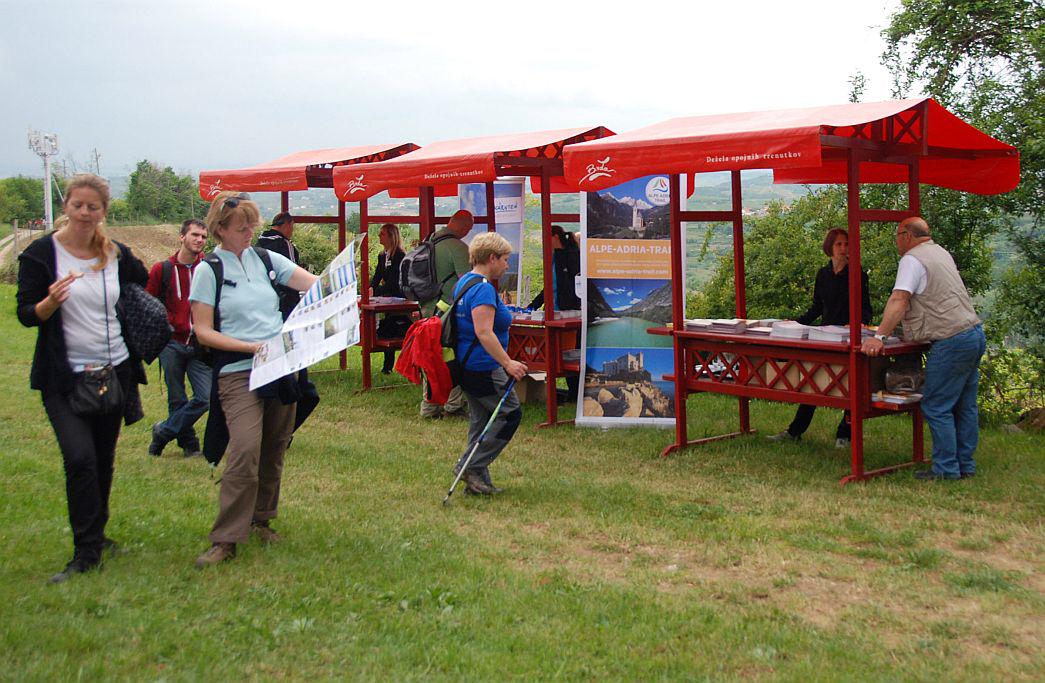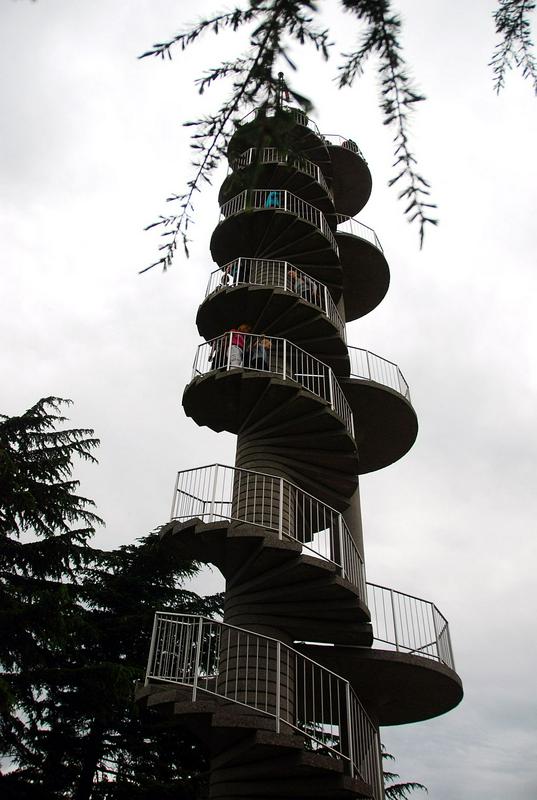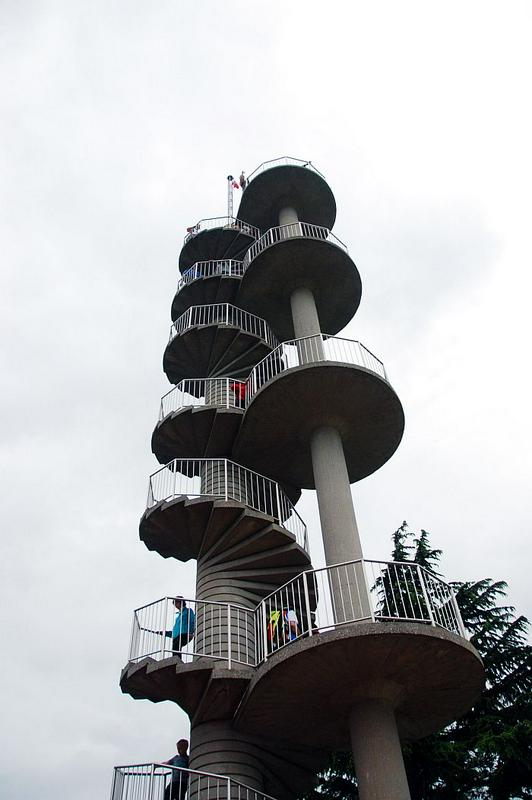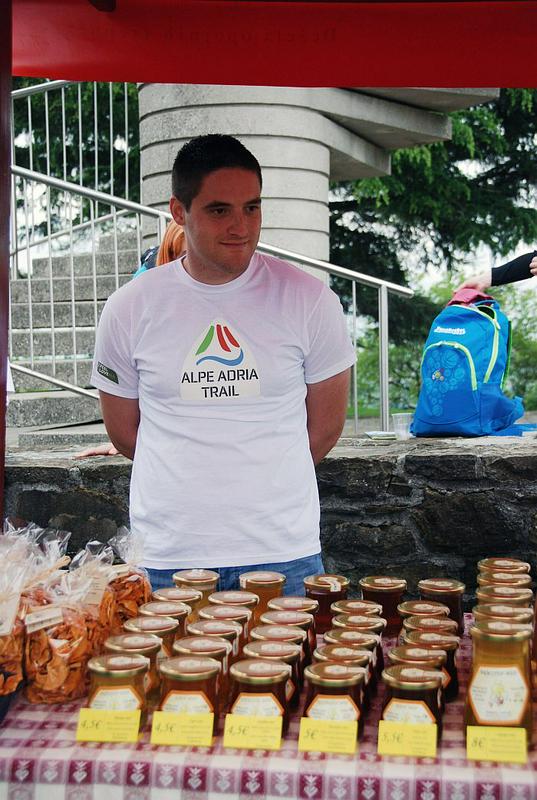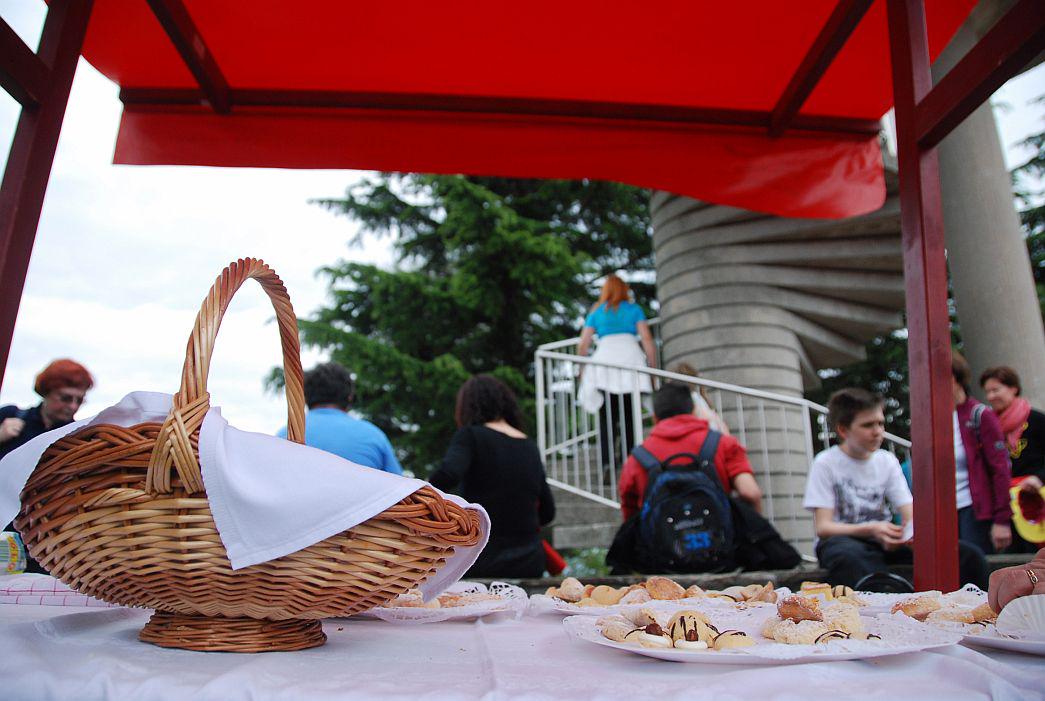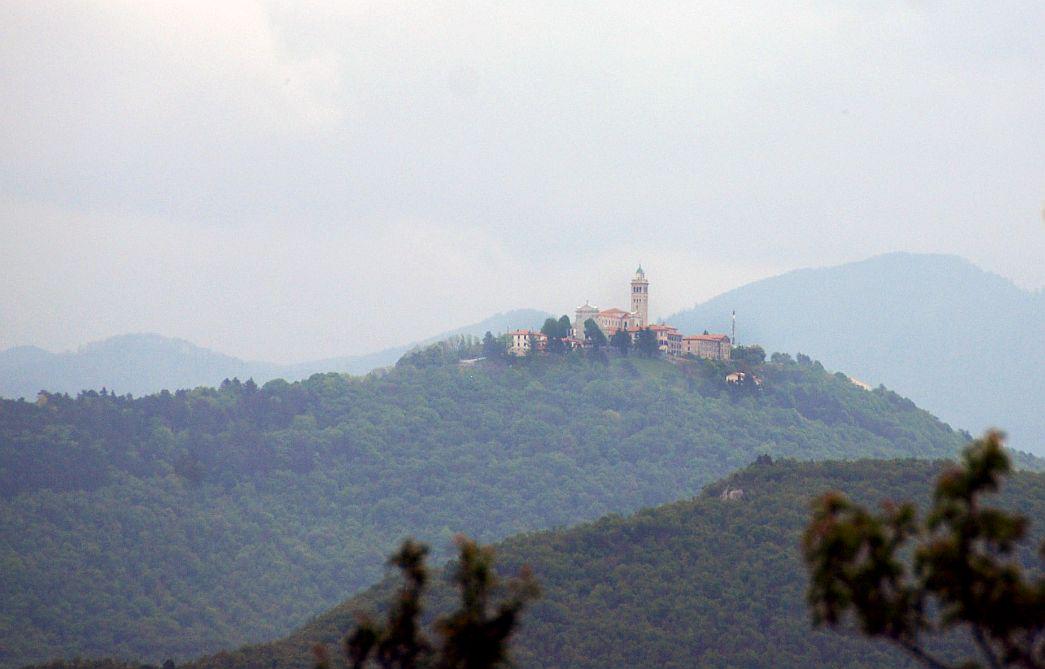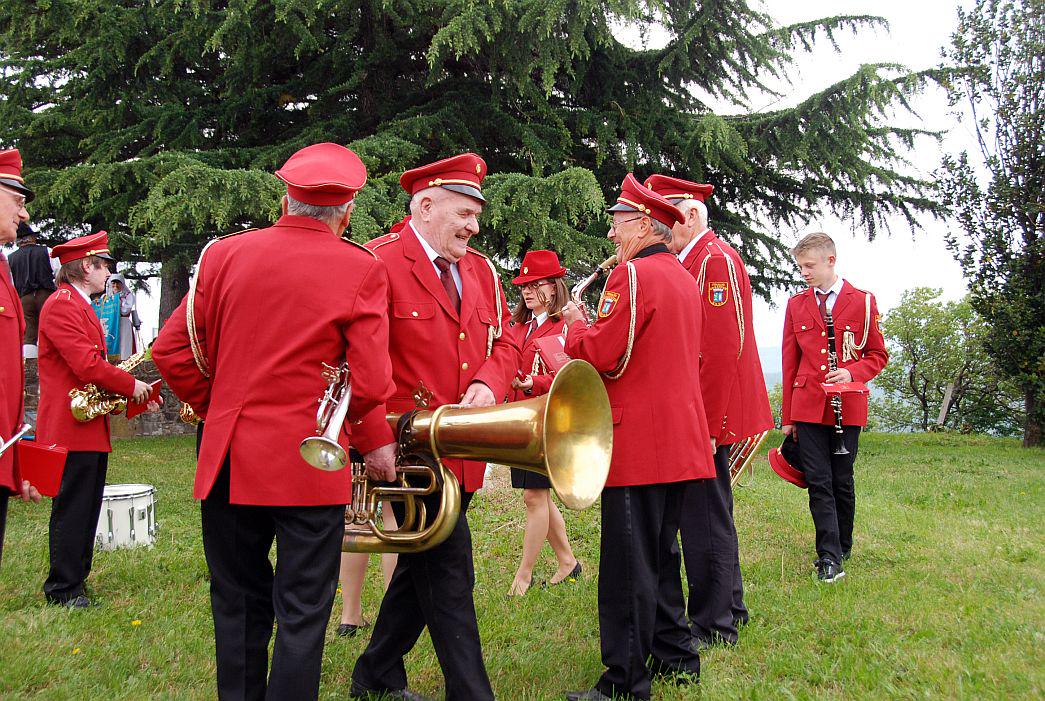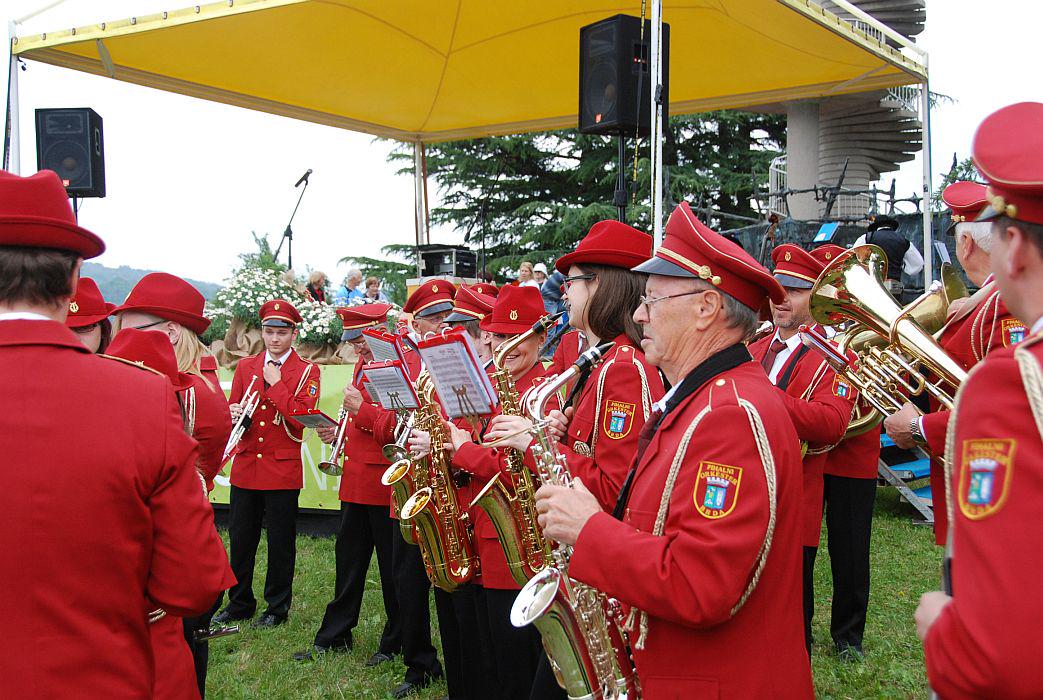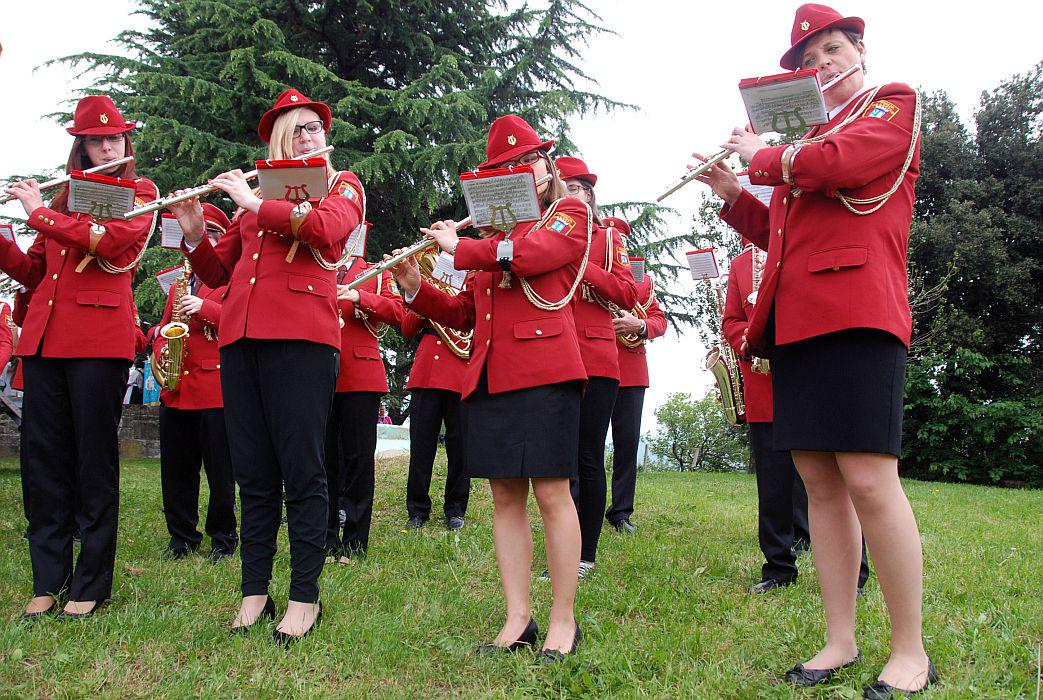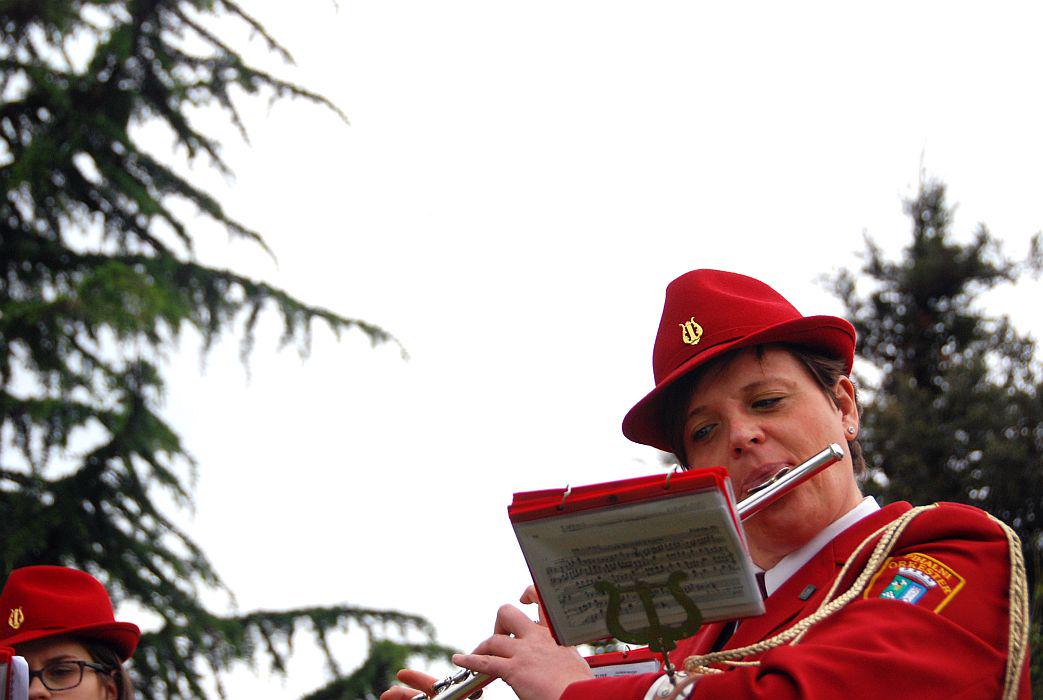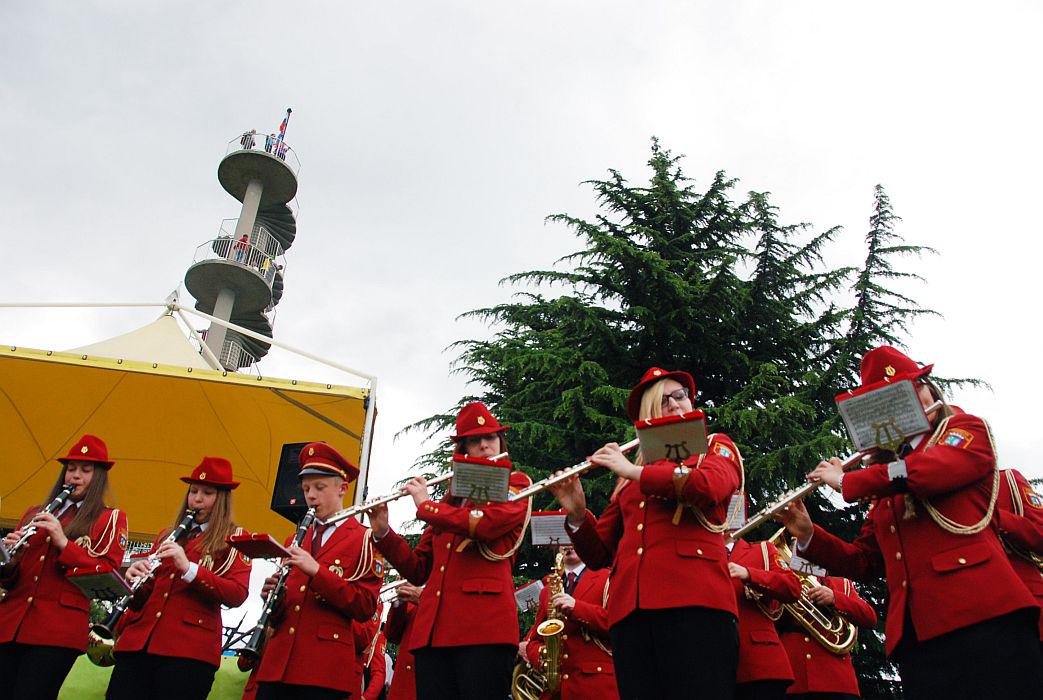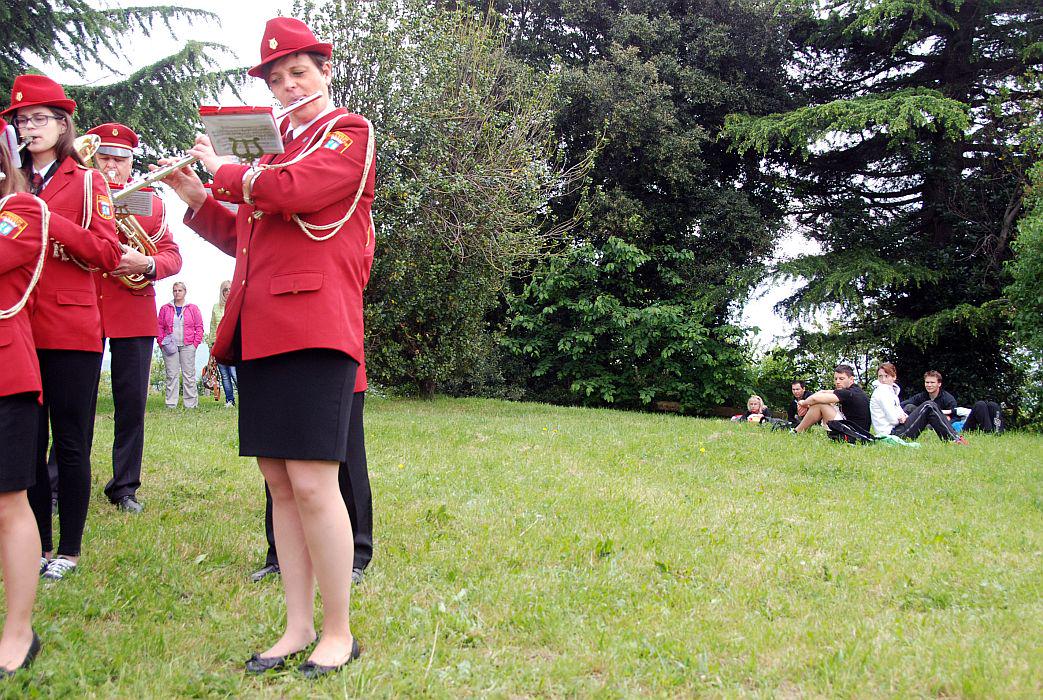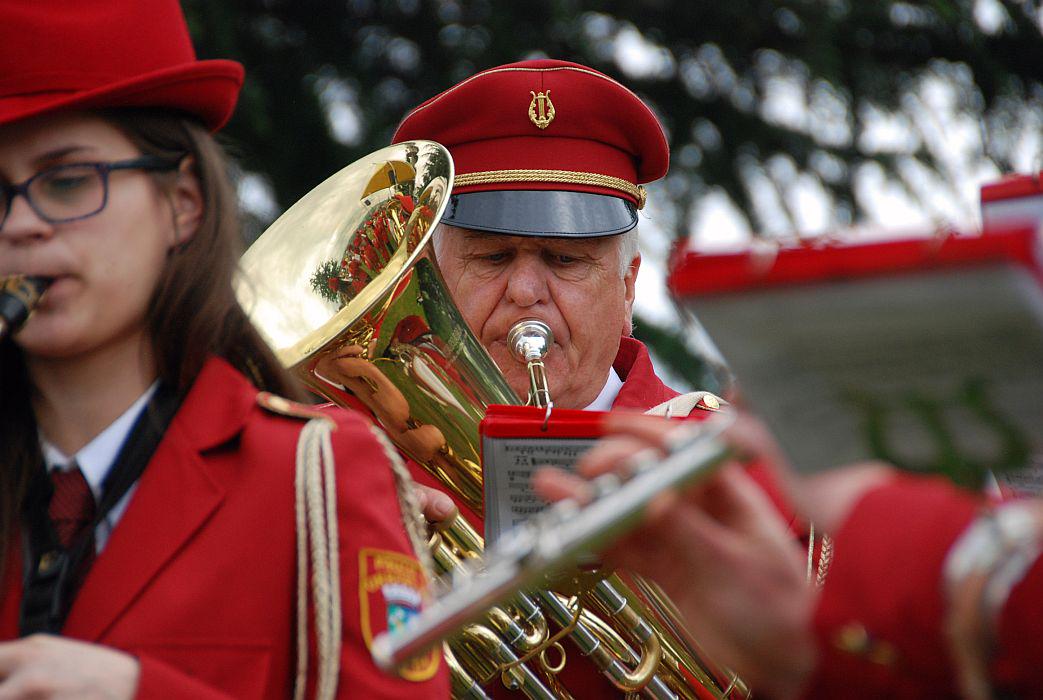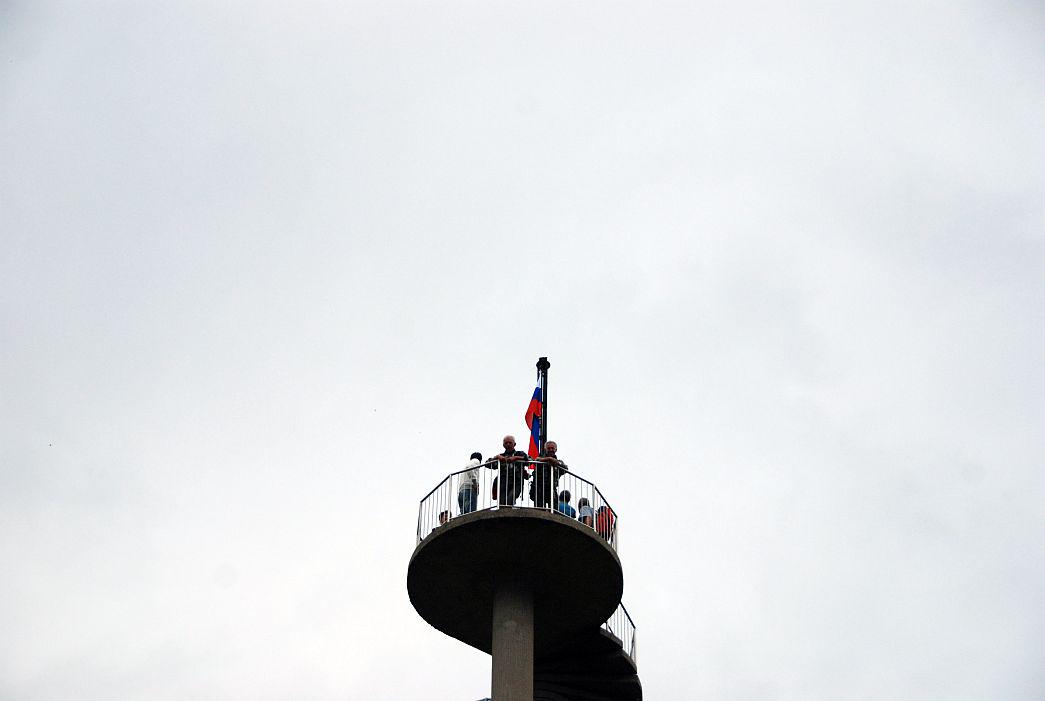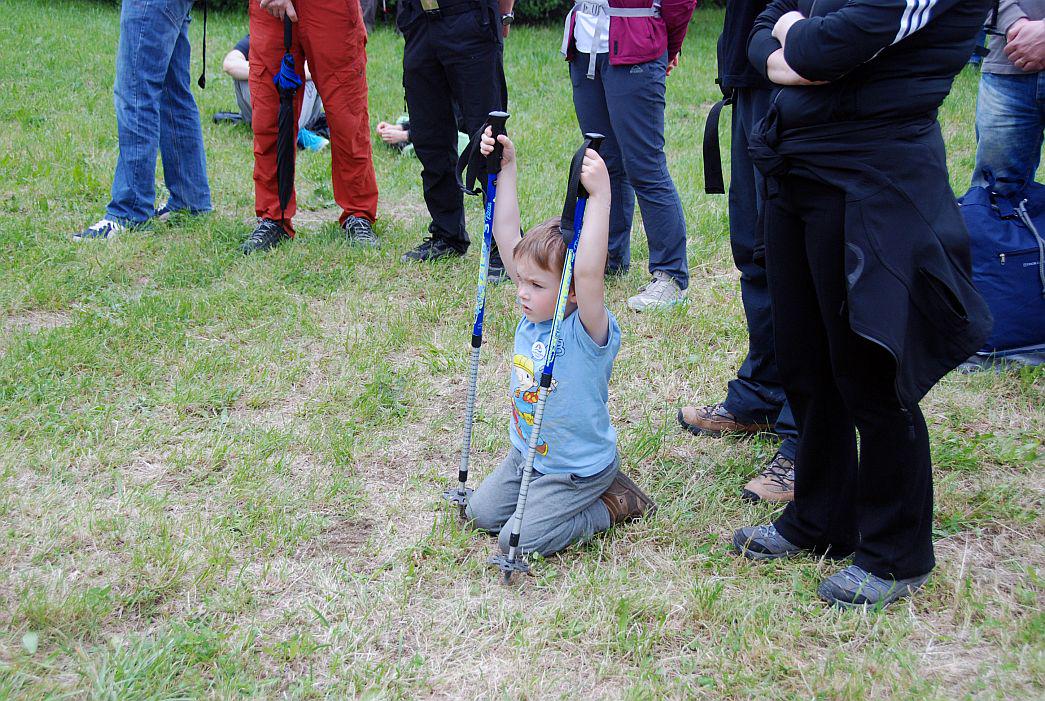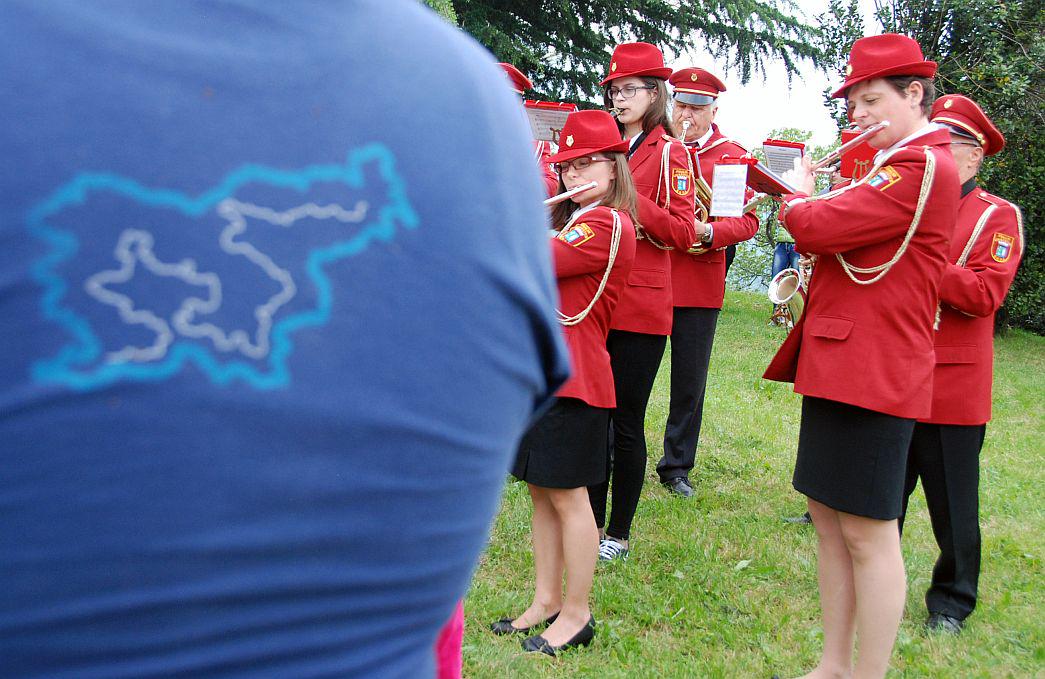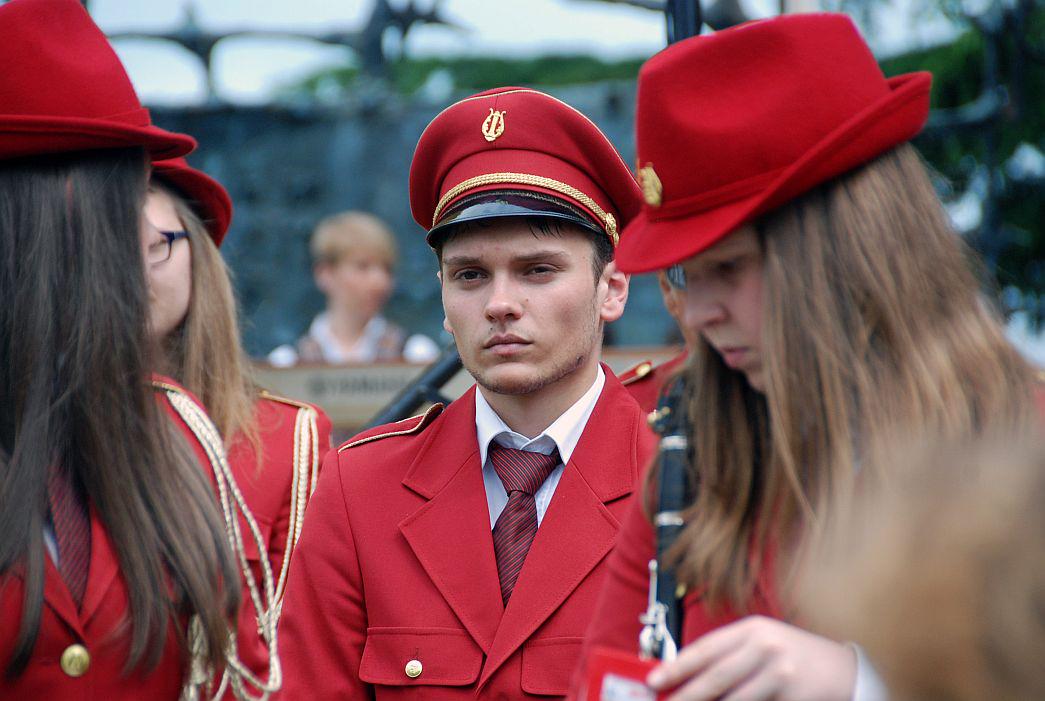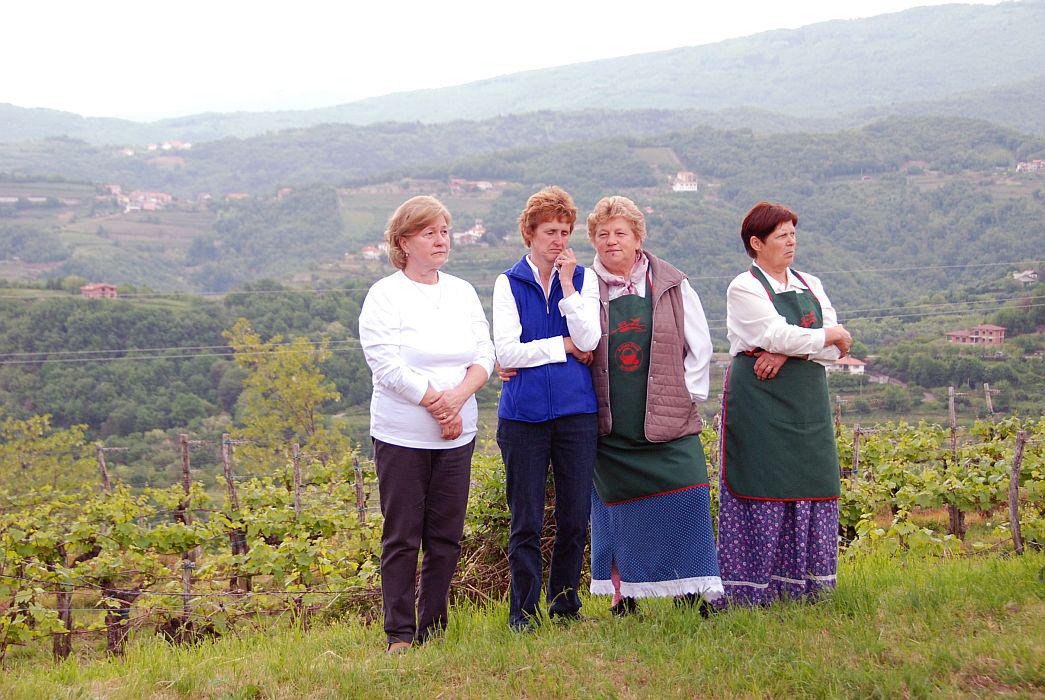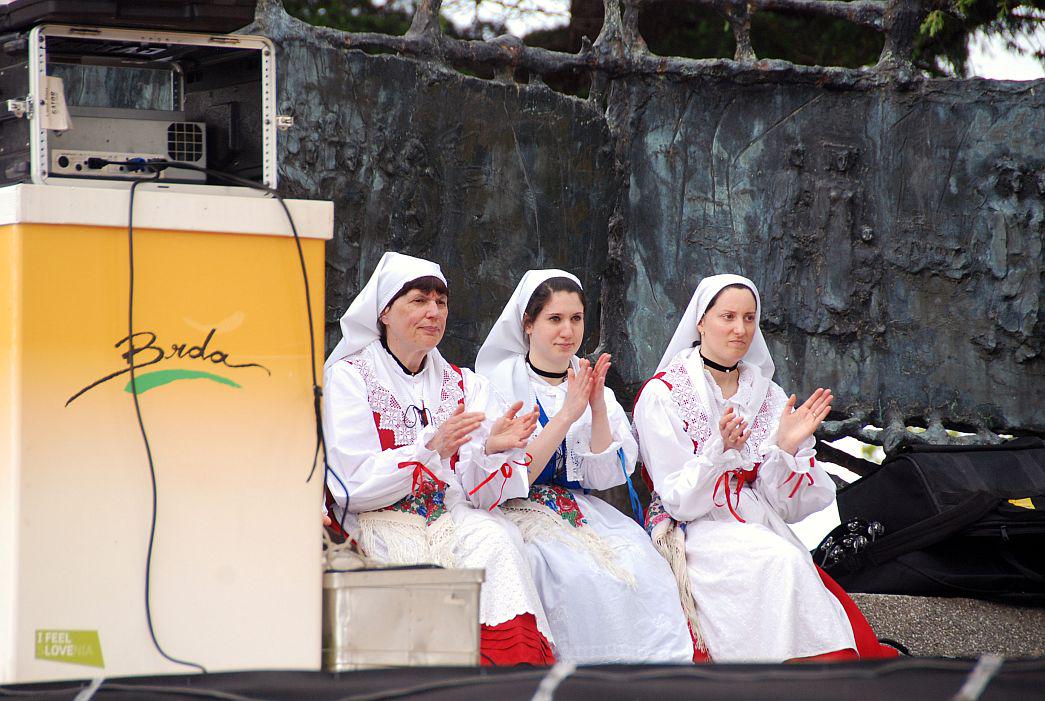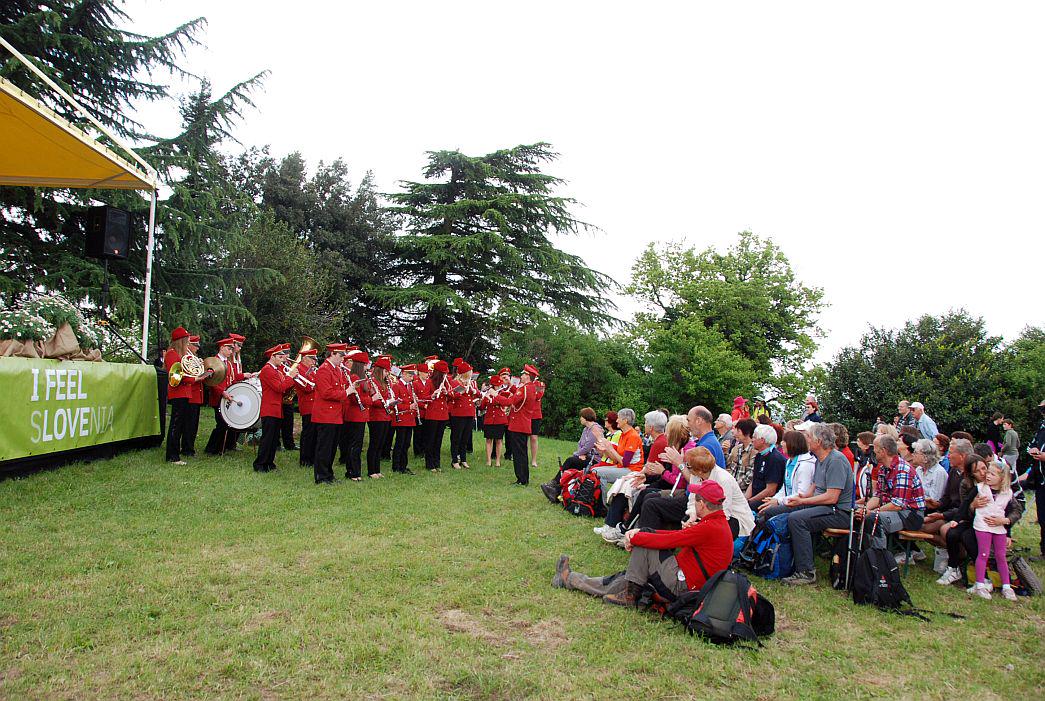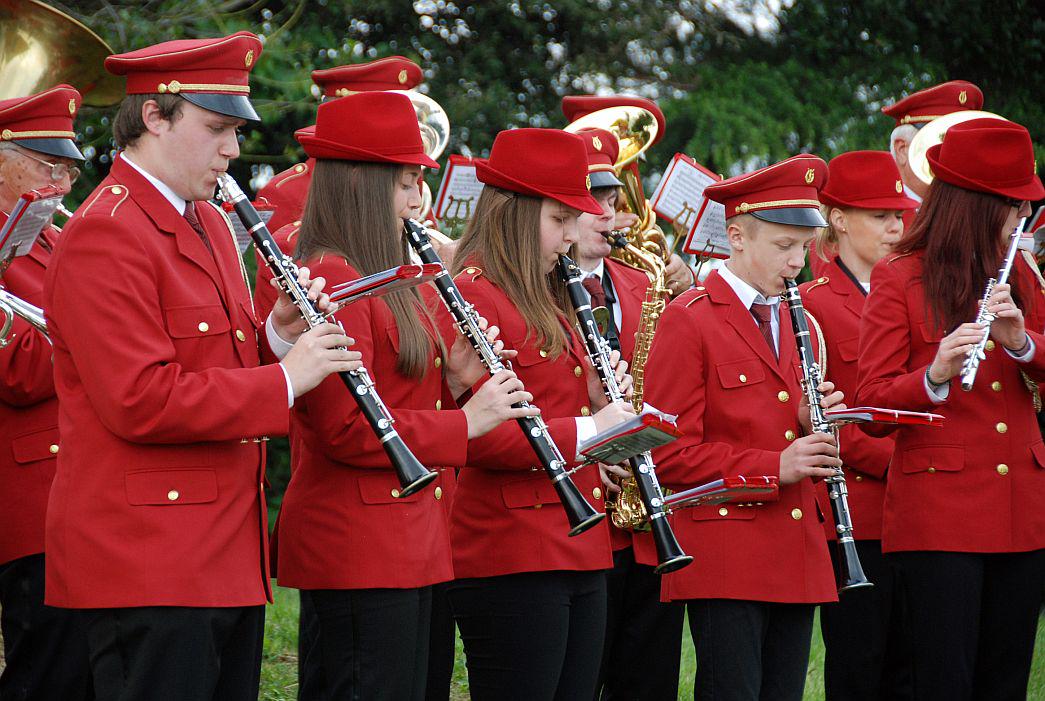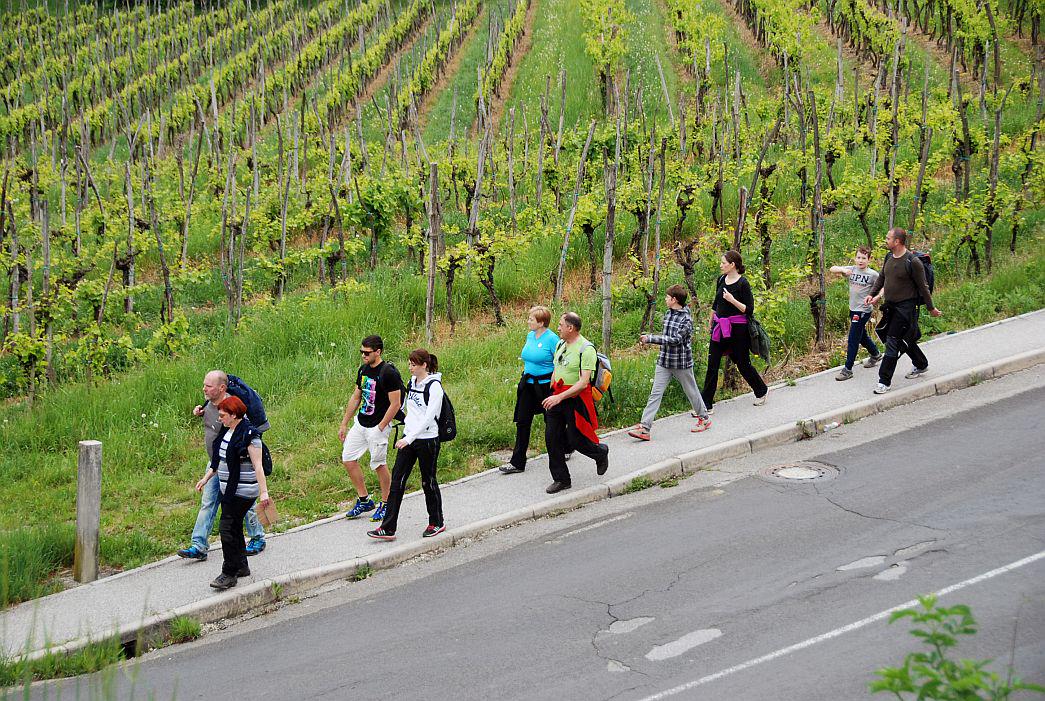
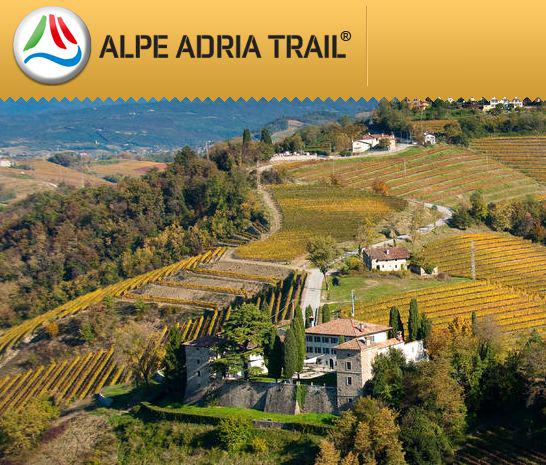
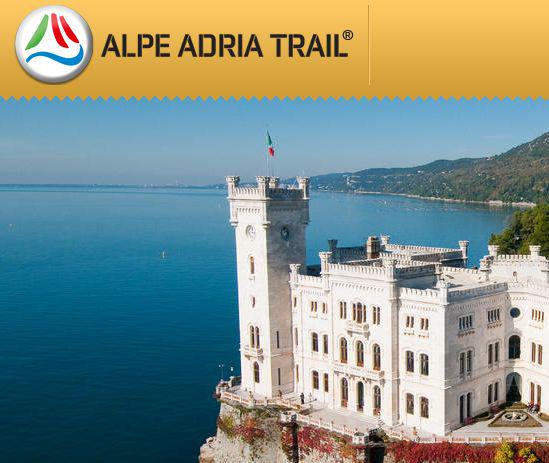
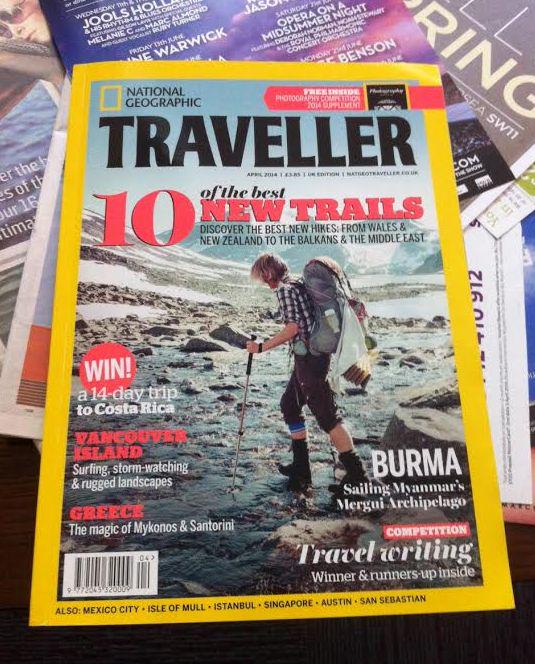

"Today the frontiers are broken, we are again capable of cooperation, and the Alpe Adria Trail could be also characterized as the Peace Trail, allowing the people of all three nationalities to hike it together in harmony." Such enthusiastic words were used by the representatives of this hiking trail, not yet two years old, which however immediately took its place among the 'hiking classics'.
After all, National Geographic in the last issue listed this trail among the "top 10 new hiking trails". The concept of the Alpe Adria Trail was based on the "new principles of tourism" - green, active and healthy, which is also the concept adopted by Slovenia.
The hiking trail connecting the Alps with the Adriatic Sea, and crossing different landscapes and cities, from the vineyards of the Gorizia hills to the Alpine valleys including Trenta, the mountain tops of the Austrian Alps and medieval settlements including Krmin, is meant to be not only the crossroads of the three countries, but also of cultures, and cuisines.
During the hike the hikers have the opportunity to see a number of interesting sights, from high mountain lakes, ancient castles, monuments, traveller signs, famous hotels, monasteries, churches, parks, autochthonous cottages, and other curiosities. It is well taken care of overnight accommodations and food and drink along the trail. These are the reasons the Alpe Adria Trail is slowly becoming not only a successful tourist project, but a successful tourist product as well.
From Kranjska Gora to Trenta, from Dobrova to Krmin
The trail consists of 43 well marked stages, leading mainly along the already existing roads. Seven of those run through Slovenia, most of them 20 kilometres long, in average the hike takes 6 hours.
The hiking trail enters Slovenia at the Jepca pass on the Slovenian-Austrian border. The stages of the Alpe Adria Trail through Slovenia continue from Kranjska Gora across the highest Slovenian pass Vršič, and through the unspoiled nature of the Soča valley and Bovec. It reaches Drežnica above Kobarid, and at Breg enters the wine-growing region of Goriška brda. It returns to Slovenia at Lipica, and leads over the Kokoš mountain to the Slovenian border with Italy at Krvavi Potok.
As planned by the founders of the trail, the honour of opening the hiking season each year belongs to a different stage, and to a different country. This year Goriška brda had the honour – as already reported, last weekend we hiked ten kilometres from Nebleg to Gonjače, and took the opportunity to stop at the traditional show Brda and wines held at the same time. vzporedno potekajočo tradicionalno prireditvijo Brda in vino.
SLOVENIAN STAGES OF AAT (length, sights, cuisine):
- STAGE 22: Baumgartnerhöhe (A)-Kranjska Gora (21 km; Jepca pass, Srednji Vrh, Hiša Liznjek, Cerkev Device Marije Vnebovzete (church of the Assumption of the Virgin Mary; characteristic dish: potica, i.e. roll with rich filling)
- STAGE 23: Kranjska Gora-Trenta (18 km; Russian Shrine, Vršič, Ajdovska deklica (the Pagan girl); monument to dr. Julij Kugy, the source of the Soča river; characteristic dish: ričet, i.e. barley and bean stew with smoked ham)
- STAGE 24: Trenta-Bovec (21 km; IC of the Triglav National Park, the Soča river gorge, Kršovec gorge, open-air museum Ravelnik; characteristic dish: Bovec specialties – čompe (potatoes), skuta (cottage cheese), the Soča trout, Bovec doughnuts)
- STAGE 25: Bovec-Drežnica (21,5 km; Virje waterfall, Boka waterfall, rafting on the Soča, Drežnica; characteristic dish: Kobarid štrukelj, i.d. rolled dumplng)
- STAGE 26: Drežnica-Tolmin (18 km; chapel at Planica, Kuhinja mountain, waterfall at the Mrzli potok creek, Brinta waterfall, the Soča river, Tolmin river bed, the Kozlov rob hill, Tolmin Museum; characteristic dish: tolminc cheese)
- STAGE 27: Tolmin-Tribil di Sopra (Gorenji Tarbij)(I) (18 km; confluence, St. Daniel’s Church, Kolovrat, open-air museum Kolovrat; characteristic dish: kostanj)
- STAGE 30: Breg pri Golem Brdu-Dobrovo (19,5 km; St. Andrew’s Church in Vrhovlje, natural stone bridge, Krčnik gorge and Kotline, Dobrovo Castle; characteristic food: white polenta, prosciutto, home-made salami, wines, olive oil, honey, fruit)
- STAGE 31: Dobrovo-Krmin (21 km; lookout tower in Gonjače, medieval city Šmartno, Medana, Krmin; characteristic food: white wines, prosciutto, smoked cured ham)
- STAGE 36: Lipica-San Dorligo della Valle (Dolina)(I) (20 km; Lipica Stud Farm, Kokoš mountain, Veliko Gradišče mountain, the valley of Glinščica, Mali Kras hill, Dolina; characteristic food: olive oil, salmon)
Starting point at Brda
Several hundreds of hikers started the hike on Sunday, through vineyards, cherry orchards, and besides the faded marks of the former Yugoslavia. We stopped in the wine cellar Goriška brda, at the Dobrovo Castle, and in Fojana and Imenje where the inhabitants of Goriška brda offered their produce. As the location is famous for its olive oil, wine, honey, frtalja (egg omelette), and white polenta, these were the specialties offered to the hikers. Next year at the opening of the hiking season the hikers will be offered the specialties characteristic for Italian Friuli, as the formal opening will be organized there.
The opening of the season confirmed that hiking is still very popular with the young and the older, and the interest in it is not waning. The reports by the organisations in charge show that the Alpe Adria Trail has been hiked by more than a thousand of hikers. Two Slovenians, Jože in Metka Vrhunc, hiked the complete length of the trail connecting the Alps with the Adriatic Sea in 22 days.
In the gallery bellow you can see some details from the opening of the hiking season in Goriška brda.
Kaja Sajovic, translated by G. K.




















































